 | ||
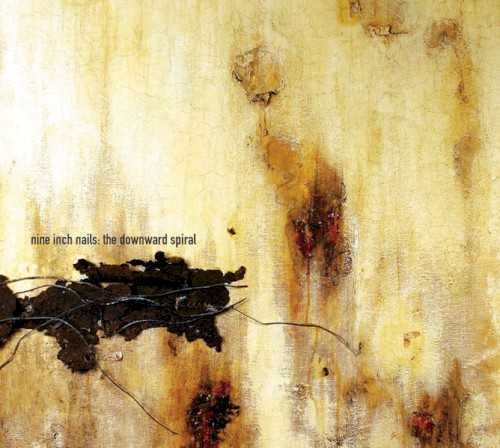 | Rank: 201 Album: 1 of 50 Artist: Nine Inch Nails Title: The Downward Spiral Released: 1994-03-08 Tracks: 14 Duration: 1:05:07 Scroll: Up Down Top Bottom 25% 50% 75% Spotify Wikipedia Allmusic AlbumCover | 1 Mr Self Destruct (04:30) 2 Piggy (04:24) 3 Heresy (03:54) 4 March of the Pigs (02:58) 5 Closer (06:13) 6 Ruiner (04:58) 7 The Becoming (05:31) 8 I Do Not Want This (05:41) 9 Big Man With a Gun (01:36) 10 A Warm Place (03:22) 11 Eraser (04:53) 12 Reptile (06:52) 13 The Downward Spiral (03:56) 14 Hurt (06:14) |
| The Downward Spiral : Allmusic album Review : The Downward Spiral positioned Trent Reznor as industrials own Phil Spector, painting detailed, layered soundscapes from a wide tonal palette. Not only did he fully integrated the crashing metal guitars of Broken, but several newfound elements -- expanded song structures, odd time signatures, shifting arrangements filled with novel sounds, tremendous textural variety -- can be traced to the influence of progressive rock. So can the painstaking attention devoted to pacing and contrast -- The Downward Spiral is full of striking sonic juxtapositions and sudden about-faces in tone, which make for a fascinating listen. More important than craft in turning Reznor into a full-fledged rock star, however, was his brooding persona. Grunge had the mainstream salivating over melodramatic angst, which had always been Reznors stock in trade. The left-field hit "Closer" made him a postmodern shaman for the 90s, obsessed with exposing the dark side he saw behind even the most innocuous façades. In fact, his theatrics on The Downward Spiral -- all the preening self-absorption and serpentine sexuality -- seemed directly descended from Jim Morrison. Yet Reznors nihilism often seemed like a reaction against some repressively extreme standard of purity, so the depravity he wallowed in didnt necessarily seem that depraved. Thats part of the reason why, in spite of its many virtues, The Downward Spiral falls just short of being the masterpiece it wants to be. For one thing, fascination with texture occasionally dissolves the hooky songwriting that fueled Pretty Hate Machine. But more than that, Reznors unflinching bleakness was beginning to seem like a carefully calibrated posture; his increasing musical sophistication points up the lyrical holding pattern. Having said that, the album ends on an affecting emotional peak -- "Hurt" mingles drama and introspection in a way Reznor had never quite managed before. Its evidence of depth behind the charisma that deservedly made him a star. | ||
![Allmusic album Review : Simon & Garfunkels first masterpiece, Parsley, Sage, Rosemary and Thyme was also the first album on which the duo, in tandem with engineer Roy Halee, exerted total control from beginning to end, right down to the mixing, and it is an achievement akin to the Beatles Revolver or the Beach Boys Pet Sounds album, and just as personal and pointed as either of those records at their respective bests. After the frantic rush to put together an LP in just three weeks that characterized the Sounds of Silence album early in 1966, Parsley, Sage, Rosemary and Thyme came together over a longer gestation period of about three months, an uncommonly extended period of recording in those days, but it gave the duo a chance to develop and shape the songs the way they wanted them. The album opens with one of the last vestiges of Paul Simons stay in England, "Scarborough Fair/Canticle" -- the latter was the duos adaptation of a centuries-old English folk song in an arrangement that Simon had learned from Martin Carthy. The two transformed the song into a daunting achievement in the studio, however, incorporating myriad vocal overdubs and utilizing a harpsichord, among other instruments, to embellish it, and also wove into its structure Simons "The Side of a Hill," a gentle antiwar song that he had previously recorded on The Paul Simon Songbook in England. The sonic results were startling on their face, a record that was every bit as challenging in its way as "Good Vibrations," but the subliminal effect was even more profound, mixing a hauntingly beautiful antique melody, and a song about love in a peaceful, domestic setting, with a message about war and death; Simon & Garfunkel were never as political as, say, Peter, Paul & Mary or Joan Baez, but on this record they did bring the Vietnam war home.
The rest of the album was less imposing but just as beguiling -- audiences could revel in the play of Simons mind (and Simon & Garfunkels arranging skills) and his sense of wonder (and frustration) on "Patterns," and appreciate the sneering rock & roll-based social commentary "The Big Bright Green Pleasure Machine." Two of the most beautiful songs ever written about the simple joys of living, the languid "Cloudy" and bouncy "The 59th Street Bridge Song (Feelin Groovy)," were no less seductive, and the album also included "Homeward Bound," their Top Five hit follow-up to "The Sound of Silence," which had actually been recorded at the sessions for that LP. No Simon & Garfunkel song elicits more difference of opinion than "The Dangling Conversation," making its LP debut here -- one camp regards it as hopelessly pretentious and precious in its literary name-dropping and rich string orchestra accompaniment, while another holds it as a finely articulate account of a couple grown distant and disconnected through their intellectual pretensions; emotionally, it is definitely the precursor to the more highly regarded "Overs" off the next album, and it resonated well on college campuses at the time, evoking images of graduate school couples drifting apart, but for all the beauty of the singing and the arrangement, it also seemed far removed from the experience of teenagers or any listeners not living a life surrounded by literature ("couplets out of rhyme" indeed!), and understandably only made the Top 30 on AM radio. "For Emily, Whenever I May Find Her" was a romantic idyll that presented Art Garfunkel at his most vulnerable sounding, anticipating such solo releases of his as "All I Know," while "Flowers Never Bend With the Rainfall" was Simon at his most reflectively philosophical, dealing with age and its changes much as "Patterns" dealt with the struggle to change, with a dissonant note (literally) at the end that anticipated the style of the duos next album.
"A Simple Desultory Philippic," which also started life in England more than a year earlier, was the teams Dylanesque fuzz tone-laden jape at folk-rock, and a statement of who they werent, and remains, alongside Peter, Paul & Marys "I Dig Rock & Roll Music," one of the best satires of its kind. And the last of Simons English-period songs, "A Poem on the Underground Wall," seemed to sum up the tightrope walk that the duo did at almost every turn on this record at this point in their career -- built around a beautiful melody and gorgeous hooks, it was, nonetheless, a study in personal privation and desperation, the "sound of silence" heard from the inside out, a voice crying out. Brilliantly arranged in a sound that was as much rock as film music, but with the requisite acoustic guitars, and displaying a dazzling command and range of language, it could have ended the album. Instead, the duo offered "7 OClock News/Silent Night," a conceptual work that was a grim and ironic (and prophetic) comment on the state of the United States in 1966. In retrospect, it dated the album somewhat, but that final track, among the darkest album-closers of the 1960s, also proved that Simon & Garfunkel werent afraid to get downbeat as well as serious for a purpose. Overall, Parsley, Sage, Rosemary and Thyme was the duos album about youthful exuberance and alienation, and it proved perennially popular among older, more thoughtful high-school students and legions of college audiences across generations. [The August 2001 reissue offers not only the best sound ever heard on this album in any incarnation, but also a few bonuses -- a slightly extended mastering of "Cloudy" that gives the listener a high-harmony surprise in its fade; and, as actual bonus tracks, Simons solo demos of "Patterns" and "A Poem on the Underground Wall." Raw and personal, theyre startling in their intimacy and their directness, and offer a more intimate view of Paul Simon, the artist, than ever seen.] parsley_sage_rosemary_and_thyme](../../images/simon_garfunkel-parsley_sage_rosemary_and_thyme.jpg) | Rank: 202 Album: 2 of 50 Artist: Simon & Garfunkel Title: Parsley, Sage, Rosemary and Thyme Released: 1966-10-10 Tracks: 14 Duration: 34:12 Scroll: Up Down Top Bottom 25% 50% 75% Spotify Wikipedia Allmusic AlbumCover | 1 Scarborough Fair / Canticle (03:14) 2 Patterns (02:49) 3 Cloudy (02:25) 4 Homeward Bound (02:32) 5 The Big Bright Green Pleasure Machine (02:51) 6 The 59th Street Bridge Song (Feelin’ Groovy) (01:58) 7 The Dangling Conversation (02:41) 8 Flowers Never Bend With the Rainfall (02:13) 9 A Simple Desultory Philippic (Or How I Was Robert McNamara’d Into Submission) (02:22) 10 For Emily, Whenever I May Find Her (02:08) 11 A Poem on the Underground Wall (01:56) 12 7 O’Clock News / Silent Night (02:12) 13 Patterns (demo) (02:55) 14 A Poem on the Underground Wall (demo) (01:50) |
| Parsley, Sage, Rosemary and Thyme : Allmusic album Review : Simon & Garfunkels first masterpiece, Parsley, Sage, Rosemary and Thyme was also the first album on which the duo, in tandem with engineer Roy Halee, exerted total control from beginning to end, right down to the mixing, and it is an achievement akin to the Beatles Revolver or the Beach Boys Pet Sounds album, and just as personal and pointed as either of those records at their respective bests. After the frantic rush to put together an LP in just three weeks that characterized the Sounds of Silence album early in 1966, Parsley, Sage, Rosemary and Thyme came together over a longer gestation period of about three months, an uncommonly extended period of recording in those days, but it gave the duo a chance to develop and shape the songs the way they wanted them. The album opens with one of the last vestiges of Paul Simons stay in England, "Scarborough Fair/Canticle" -- the latter was the duos adaptation of a centuries-old English folk song in an arrangement that Simon had learned from Martin Carthy. The two transformed the song into a daunting achievement in the studio, however, incorporating myriad vocal overdubs and utilizing a harpsichord, among other instruments, to embellish it, and also wove into its structure Simons "The Side of a Hill," a gentle antiwar song that he had previously recorded on The Paul Simon Songbook in England. The sonic results were startling on their face, a record that was every bit as challenging in its way as "Good Vibrations," but the subliminal effect was even more profound, mixing a hauntingly beautiful antique melody, and a song about love in a peaceful, domestic setting, with a message about war and death; Simon & Garfunkel were never as political as, say, Peter, Paul & Mary or Joan Baez, but on this record they did bring the Vietnam war home. The rest of the album was less imposing but just as beguiling -- audiences could revel in the play of Simons mind (and Simon & Garfunkels arranging skills) and his sense of wonder (and frustration) on "Patterns," and appreciate the sneering rock & roll-based social commentary "The Big Bright Green Pleasure Machine." Two of the most beautiful songs ever written about the simple joys of living, the languid "Cloudy" and bouncy "The 59th Street Bridge Song (Feelin Groovy)," were no less seductive, and the album also included "Homeward Bound," their Top Five hit follow-up to "The Sound of Silence," which had actually been recorded at the sessions for that LP. No Simon & Garfunkel song elicits more difference of opinion than "The Dangling Conversation," making its LP debut here -- one camp regards it as hopelessly pretentious and precious in its literary name-dropping and rich string orchestra accompaniment, while another holds it as a finely articulate account of a couple grown distant and disconnected through their intellectual pretensions; emotionally, it is definitely the precursor to the more highly regarded "Overs" off the next album, and it resonated well on college campuses at the time, evoking images of graduate school couples drifting apart, but for all the beauty of the singing and the arrangement, it also seemed far removed from the experience of teenagers or any listeners not living a life surrounded by literature ("couplets out of rhyme" indeed!), and understandably only made the Top 30 on AM radio. "For Emily, Whenever I May Find Her" was a romantic idyll that presented Art Garfunkel at his most vulnerable sounding, anticipating such solo releases of his as "All I Know," while "Flowers Never Bend With the Rainfall" was Simon at his most reflectively philosophical, dealing with age and its changes much as "Patterns" dealt with the struggle to change, with a dissonant note (literally) at the end that anticipated the style of the duos next album. "A Simple Desultory Philippic," which also started life in England more than a year earlier, was the teams Dylanesque fuzz tone-laden jape at folk-rock, and a statement of who they werent, and remains, alongside Peter, Paul & Marys "I Dig Rock & Roll Music," one of the best satires of its kind. And the last of Simons English-period songs, "A Poem on the Underground Wall," seemed to sum up the tightrope walk that the duo did at almost every turn on this record at this point in their career -- built around a beautiful melody and gorgeous hooks, it was, nonetheless, a study in personal privation and desperation, the "sound of silence" heard from the inside out, a voice crying out. Brilliantly arranged in a sound that was as much rock as film music, but with the requisite acoustic guitars, and displaying a dazzling command and range of language, it could have ended the album. Instead, the duo offered "7 OClock News/Silent Night," a conceptual work that was a grim and ironic (and prophetic) comment on the state of the United States in 1966. In retrospect, it dated the album somewhat, but that final track, among the darkest album-closers of the 1960s, also proved that Simon & Garfunkel werent afraid to get downbeat as well as serious for a purpose. Overall, Parsley, Sage, Rosemary and Thyme was the duos album about youthful exuberance and alienation, and it proved perennially popular among older, more thoughtful high-school students and legions of college audiences across generations. [The August 2001 reissue offers not only the best sound ever heard on this album in any incarnation, but also a few bonuses -- a slightly extended mastering of "Cloudy" that gives the listener a high-harmony surprise in its fade; and, as actual bonus tracks, Simons solo demos of "Patterns" and "A Poem on the Underground Wall." Raw and personal, theyre startling in their intimacy and their directness, and offer a more intimate view of Paul Simon, the artist, than ever seen.] | ||
 | Rank: 203 Album: 3 of 50 Artist: Michael Jackson Title: Bad Released: 1987-08-25 Tracks: 18 Duration: 1:11:06 Scroll: Up Down Top Bottom 25% 50% 75% Spotify TrackSamples Wikipedia Allmusic AlbumCover | 1 Bad (04:07) 2 The Way You Make Me Feel (04:58) 3 Speed Demon (04:01) 4 Liberian Girl (03:52) 5 Just Good Friends (04:07) 6 Another Part of Me (03:54) 7 Man in the Mirror (05:19) 8 I Just Can’t Stop Loving You (04:12) 9 Dirty Diana (04:41) 10 Smooth Criminal (04:17) 11 Leave Me Alone (04:40) 12 [interview] (04:03) 13 Streetwalker (05:49) 14 [interview] (02:53) 15 Todo mi amor eres tu (I Just Can’t Stop Loving You) (04:05) 16 [interview] (02:30) 17 [introduction to Fly Away] (00:08) 18 Fly Away (03:26) |
| Bad : Allmusic album Review : The downside to a success like Thriller is that its nearly impossible to follow, but Michael Jackson approached Bad much the same way he approached Thriller -- take the basic formula of the predecessor, expand it slightly, and move it outward. This meant that he moved deeper into hard rock, deeper into schmaltzy adult contemporary, deeper into hard dance -- essentially taking each portion of Thriller to an extreme, while increasing the quotient of immaculate studiocraft. He wound up with a sleeker, slicker Thriller, which isnt a bad thing, but its not a rousing success, either. For one thing, the material just isnt as good. Look at the singles: only three can stand alongside album tracks from its predecessor ("Bad," "The Way You Make Me Feel," "I Just Cant Stop Loving You"), another is simply OK ("Smooth Criminal"), with the other two showcasing Jackson at his worst (the saccharine "Man in the Mirror," the misogynistic "Dirty Diana"). Then, there are the album tracks themselves, something that virtually didnt exist on Thriller but bog down Bad not just because theyre bad, but because they reveal that Jacksons state of the art is not hip. And they constitute a near-fatal dead spot on the record -- songs three through six, from "Speed Demon" to "Another Part of Me," a sequence thats utterly faceless, lacking memorable hooks and melodies, even when Stevie Wonder steps in for "Just Good Friends," relying on nothing but studiocraft. Part of the joy of Off the Wall and Thriller was that craft was enhanced with tremendous songs, performances, and fresh, vivacious beats. For this dreadful stretch, everything is mechanical, and while the album rebounds with songs that prove mechanical can be tolerable if delivered with hooks and panache, it still makes Bad feel like an artifact of its time instead a piece of music that transcends it. | ||
 | Rank: 204 Album: 4 of 50 Artist: Bob Dylan Title: Modern Times Released: 2006-08-06 Tracks: 10 Duration: 1:02:41 Scroll: Up Down Top Bottom 25% 50% 75% Spotify Allmusic AlbumCover | 1 Thunder on the Mountain (05:55) 2 Spirit on the Water (07:42) 3 Rollin’ and Tumblin’ (06:01) 4 When the Deal Goes Down (05:04) 5 Someday Baby (04:55) 1 Workingman’s Blues #2 (06:07) 2 Beyond the Horizon (05:34) 3 Nettie Moore (06:52) 4 The Levee’s Gonna Break (05:43) 5 Ain’t Talkin’ (08:48) |
| Modern Times : Allmusic album Review : When Bob Dylan dropped Time Out of Mind in 1997, it was a rollicking rockabilly and blues record, full of sad songs about mortality, disappointment, and dissolution. 2001 brought Love and Theft, which was also steeped in stomping blues and other folk forms. It was funny, celebratory in places and biting in others. Dylan has been busy since then: he did a Victorias Secret commercial, toured almost nonstop, was in a couple films -- Larry Charles Masked and Anonymous and Martin Scorseses documentary No Direction Home -- and published the first of a purported three volumes of his cagey, rambling autobiography, Chronicles. Lately, hes been thinking about Alicia Keys. This last comment comes from the man himself in "Thunder on the Mountain," the opening track on Modern Times, a barn-burning, raucous, and unruly blues tune that finds the old man sounding mighty feisty and gleefully agitated: "I was thinkin bout Alicia Keys/Couldnt keep from cryin/She was born in Hells Kitchen and I was livin down the line/Ive been lookin for her even clear through Tennessee." The drums shuffle with brushes, the piano is pumping like Jerry Lee Lewis, the bass is popping, and a slide guitar that feels like its calling the late Michael Bloomfield back from 1966 -- à la Highway 61 Revisited -- slips in and out of the ether like a ghost wanting to emerge in the flesh. Dylans own choppy leads snarl in the break and hes letting his blues fall down like rain: "Gonna raise me an army, some tough sons of bitches/Ill recruit my army from the orphanages/ Ive been to St. Hermans church and said my religious vows/I sucked the milk out of a thousand cows/I got the pork chop, she got the pie/She aint no angel and neither am I...I did all I could/I did it right there and then/Ive already confessed I dont need to confess again." Thus begins the third part of Dylans renaissance trilogy (thus far, yall). Modern Times is raw; it feels live, immediate, and in places even shambolic. Rhythms slip, time stretches and turns back on itself, and lyrics are rushed to fit into verses that just wont stop coming. Dylan produced the set himself under his Jack Frost moniker. Its songs are humorous and cryptic, tender and snarling. Whats he saying? We dont need to concern ourselves with that any more than we had to Willie Dixon talking about backdoor men or Elmore James dusting his broom. Dylans blues are primitive and impure. Though performed by a crackerjack band, theyre played with fury; the singer wrestles down musical history as he spits in the eye of the modern world. But blues isnt the only music here. There are parlor songs such as "Spirit on the Water," where love is as heavenly and earthly a thing as exists in this life. The band swings gently and carefree, with Denny Freeman and Stu Kimball playing slippery -- and sometimes sloppy -- jazz chords as Tony Garniers bass and George Recelis sputtering snare walk the beat. Another, "When the Deal Goes Down," tempts the listener into thinking that Dylan is aping Bing Crosby in his gravelly, snake-rattle voice. True, hes an unabashed fan of the old arch mean-hearted crooner. But it just aint Bing, because its got that true old-time swing. Dylans singing style in these songs comes from the great blues and jazzman Lonnie Johnson (whose version of the Grosz and Coslow standard "Tomorrow Night" hes been playing for years in his live set). If you need further proof, look to Johnsons last recordings done in the late 50s and early 60s ("I Found a Dream" and "Ill Get Along Somehow"), or go all the way back to the early years for "Secret Emotions," and "In Love Again," cut in 1940. It is in these songs where you will find the heart of Dylans sweet song ambition and also that unique phrasing that makes him one of the greatest blues singers and interpreters ever. Dylan evokes Muddy Waters in "Rollin and Tumblin." He swipes the riff, the title, the tune itself, and uses some of the words and adds a whole bunch of his own. Same with his use of Sleepy John Estes in "Someday Baby".. Those who think Dylan merely plagiarizes miss the point. Dylan is a folk musician; he uses American folk forms such as blues, rock, gospel, and R&B as well as lyrics, licks, and/or whatever else he can to get a song across. This tradition of borrowing and retelling goes back to the beginning of song and story. Even the title of Modern Times is a wink-eye reference to a film by Charlie Chaplin. It doesnt make Dylan less; it makes him more, because he contains all of these songs within himself. By his use of them, he adds to their secret histories and labyrinthine legends. Besides, hes been around long enough to do anything he damn well pleases and has been doing so since the beginning. Modern Times expresses emotions and comments upon everything from love ("When the Deal Goes Down," "Beyond the Horizon") to mortality ("The Levees Gonna Break," "Aint Talkin") to the state of the world -- check "Workingmans Blues #2," where Dylan sings gently about the "buyin power of the proletariats gone down/Moneys getting shallow and weak...they say low wages are reality if we want to compete abroad." But in the next breath hes put his "cruel weapons on the shelf" and invites his beloved to sit on his knee. Its a poignant midtempo ballad that walks the line between the topical songs of Cisco Houston and Woody Guthrie to the love songs of Stephen Foster and Leadbelly. One can feel both darkness and light struggling inside the singer for dominance. But in his carnal and spiritual imagery and rakish honesty, he doesnt give in to either side and walks the hardest path -- the "long road down" to his own destiny. This is a storyteller, a pilgrim whos seen it all; hes found it all wanting; hes found some infinitesimal take on the truth that hes holding on to with a vengeance. In the midst of changes that are foreboding, Modern Times is the sound of an ambivalent Psalter coming in from the storm, dirty, bloodied, but laughing at himself -- because he knows nobody will believe him anyway. Dylan digs deep into the pocket of American song past in "Nettie Moore," a 19th century tune from which he borrowed the title, the partial melody, and first line of its chorus. He also uses words by W.C. Handy and Robert Johnson as he extends the meaning of the tome by adding his own metaphorical images and wry observations. However, even as the song is from antiquity, its full of the rest of Modern Times bemusement. "The Levees Gonna Break" shakes and shimmies as it warns about the coming catastrophe. Coming as it does on the anniversary of Hurricane Katrina, its a particularly poignant number that reveals apocalypse and redemption and rails on the greedy and powerful as it parties in the gutter. There are no sacred cows -- when Dylan evokes Carl Perkins exhortation to put "your cat clothes on," its hard not to stomp around maniacally even as you feel his righteousness come through. The great irony is in the final track, "Aint Talkin," where a lonesome fiddle, piano, and hand percussion spill out a gypsy ballad that states a yearning, that amounts to an unsatisfied spiritual hunger. The pilgrim wanders, walks, and aspires to do good unto others, though he falters often -- he sometimes even wants to commit homicide. Its all part of the "trawl" of living in the world today. Dylans simmering growl adds a sense of apprehension, of whistling through the graveyard, with determination to get to he knows not where -- supposedly its the other side of the world. The guitar interplay with the fiddle comes through loud and clear in the bittersweet tune. Its like how "Beyond the Horizon" uses gypsy melodies and swing to tenderly underscore the seriousness in the words. It sends the album off with a wry sense of foreboding. This pilgrim is sticking to the only thing he knows is solid -- the motion of his feet. Modern Times portrays a new weird America, even stranger than the old one, because its merely part of a world consumed by insanity. In these ten songs, bawdy joy, restless heartache, a wild sense of humor, and bottomless sadness all coexist and inform one another as a warning and celebration of this precious human life while wondering openly about what comes after. This world view is expressed through musical and lyrical forms that are threatened with extinction: old rickety blues that still pack an electrically charged wallop, porch and parlor tunes, and pop ballads that could easily have come straight from the 1930s via the 1890s, but it also wails and roars the blues. Modern Times is the work of a professional mythmaker, a back-alley magician, and a prophetic creator of mischief. He knows his characters because hes been them all and can turn them all inside out in song: the road-worn holy man whos also a thief; the tender-hearted lover who loves to brawl; the poetic sage whos also a pickpocket; and the Everyman who embodies them all and just wants to get on with it. On Modern Times, all bets are off as to who finishes the race dead last, because thats the most interesting place to be: "Meet me at the bottom, dont lag behind/Bring me my boots and shoes/You can hang back or fight your best on the frontline/Sing a little bit of these workingman blues." There is nothing so intriguing as contradiction and Dylan offers it with knowing laughter and tears, because in his songs he displays that they are both sides of the same coin and he never waffles, because hes on the other side of the looking glass. Modern Times is the work of an untamed artist who, as he grows older, sees mortality as something to accept but not bow down to, the sound that refuses to surrender to corruption of the soul and spirit. Its more than a compelling listen; its a convincing one. | ||
 | Rank: 205 Album: 5 of 50 Artist: Cream Title: Wheels of Fire Released: 1968 Tracks: 13 Duration: 1:20:44 Scroll: Up Down Top Bottom 25% 50% 75% Spotify Wikipedia Allmusic AlbumCover | 1 White Room (04:59) 2 Sitting on Top of the World (05:01) 3 Passing the Time (04:37) 4 As You Said (04:22) 5 Pressed Rat and Warthog (03:18) 6 Politician (04:16) 7 Those Were the Days (02:57) 8 Born Under a Bad Sign (03:12) 9 Deserted Cities of the Heart (03:39) 1 Crossroads (04:15) 2 Spoonful (16:46) 3 Traintime (07:01) 4 Toad (16:15) |
| Wheels of Fire : Allmusic album Review : If Disraeli Gears was the album where Cream came into their own, its successor, Wheels of Fire, finds the trio in full fight, capturing every side of their multi-faceted personality, even hinting at the internal pressures that soon would tear the band asunder. A dense, unwieldy double album split into an LP of new studio material and an LP of live material, its sprawling and scattered, at once awesome in its achievement and maddening in how it falls just short of greatness. It misses its goal not because one LP works and the other doesnt, but because both the live and studio sets suffer from strikingly similar flaws, deriving from the constant power struggle between the trio. Of the three, Ginger Baker comes up short, contributing the passable "Passing the Time" and "Those Were the Days," which are overshadowed by how he extends his solo drum showcase "Toad" to a numbing quarter of an hour and trips upon the Wind & the Willows whimsy of "Pressed Rat and Warthog," whose studied eccentricity pales next to Eric Claptons nimble, eerily cheerful "Anyone for Tennis." In almost every regard, Wheels of Fire is a terrific showcase for Clapton as a guitarist, especially on the first side of the live album with "Crossroads," a mighty encapsulation of all of his strengths. Some of that is studio trickery, as producer Felix Pappalardi cut together the best bits of a winding improvisation to a tight four minutes, giving this track a relentless momentum thats exceptionally exciting, but theres no denying that Clapton is at a peak here, whether hes tearing off solos on a 17-minute "Spoonful" or goosing "White Room" toward the heights of madness. But its the architect of "White Room," bassist Jack Bruce, who, along with his collaborator Peter Brown, reaches a peak as a songwriter. Aside from the monumental "White Room," he has the lovely, wistful "As You Said," the cinematic "Deserted Cities of the Heart," and the slow, cynical blues "Politician," all among Creams very best work. And in many ways Wheels of Fire is indeed filled with Creams very best work, since it also captures the fury and invention (and indulgence) of the band at its peak on the stage and in the studio, but as it tries to find a delicate balance between these three titanic egos, it doesnt quite add up to something greater than the sum of its parts. But taken alone, those individual parts are often quite tremendous. | ||
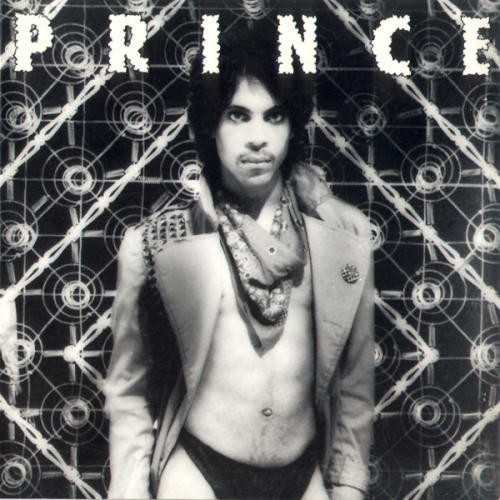 | Rank: 206 Album: 6 of 50 Artist: Prince Title: Dirty Mind Released: 1980 Tracks: 8 Duration: 30:10 Scroll: Up Down Top Bottom 25% 50% 75% Spotify TrackSamples Wikipedia Allmusic AlbumCover | 1 Dirty Mind (04:14) 2 When You Were Mine (03:44) 3 Do It All Night (03:42) 4 Gotta Broken Heart Again (02:16) 5 Uptown (05:32) 6 Head (04:44) 7 Sister (01:31) 8 Partyup (04:24) |
| Dirty Mind : Allmusic album Review : Neither For You nor Prince was adequate preparation for the full-blown masterpiece of Princes third album, Dirty Mind. Recorded in his home studio, with Prince playing nearly every instrument, Dirty Mind is a stunning, audacious amalgam of funk, new wave, R&B, and pop, fueled by grinningly salacious sex and the desire to shock. Where other pop musicians suggested sex in lewd double-entendres, Prince left nothing to hide -- before its release, no other rock or funk record was ever quite as explicit as Dirty Mind, with its gleeful tales of oral sex, threesomes, and even incest. Certainly, it opened the doors for countless sexually explicit albums, but to reduce its impact to mere profanity is too reductive -- the music of Dirty Mind is as shocking as its graphic language, bending styles and breaking rules with little regard for fixed genres. Basing the album on a harder, rock-oriented beat more than before, Prince tries everything -- theres pure new wave pop ("When You Were Mine"), soulful crooning ("Gotta Broken Heart Again"), robotic funk ("Dirty Mind"), rock & roll ("Sister"), sultry funk ("Head," "Do It All Night"), and relentless dance jams ("Uptown," "Partyup"), all in the space of half an hour. Its a breathtaking, visionary album, and its fusion of synthesizers, rock rhythms, and funk set the style for much of the urban soul and funk of the early 80s. | ||
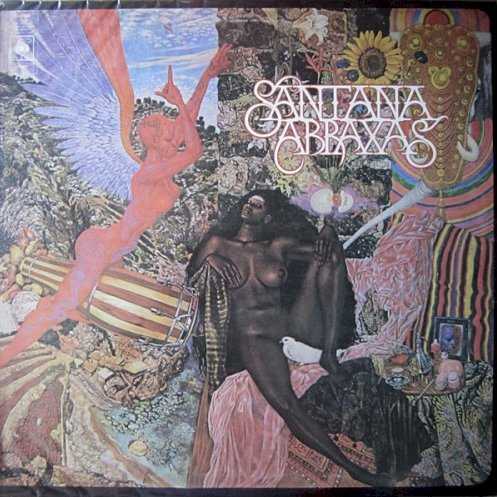 | Rank: 207 Album: 7 of 50 Artist: Santana Title: Abraxas Released: 1970-11 Tracks: 9 Duration: 37:16 Scroll: Up Down Top Bottom 25% 50% 75% Spotify Wikipedia Allmusic AlbumCover | 1 Singing Winds, Crying Beasts (04:51) 2 Black Magic Woman / Gypsy Queen (05:19) 3 Oye como va (04:17) 4 Incident at Neshabur (05:00) 5 Se acabó (02:51) 6 Mother’s Daughter (04:28) 7 Samba pa ti (04:41) 8 Hope You’re Feeling Better (04:17) 9 El Nicoya (01:30) |
| Abraxas : Allmusic album Review : The San Francisco Bay Area rock scene of the late 60s was one that encouraged radical experimentation and discouraged the type of mindless conformity thats often plagued corporate rock. When one considers just how different Santana, Jefferson Airplane, Moby Grape, and the Grateful Dead sounded, it becomes obvious just how much it was encouraged. In the mid-90s, an album as eclectic as Abraxas would be considered a marketing execs worst nightmare. But at the dawn of the 1970s, this unorthodox mix of rock, jazz, salsa, and blues proved quite successful. Whether adding rock elements to salsa king Tito Puentes "Oye Como Va," embracing instrumental jazz-rock on "Incident at Neshabur" and "Samba Pa Ti," or tackling moody blues-rock on Fleetwood Macs "Black Magic Woman," the band keeps things unpredictable yet cohesive. Many of the Santana albums that came out in the 70s are worth acquiring, but for novices, Abraxas is an excellent place to start. | ||
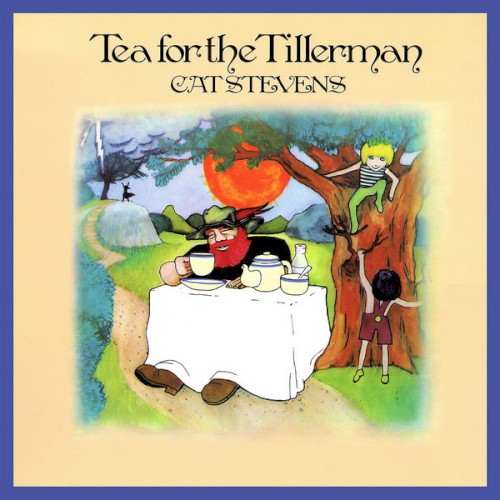 | Rank: 208 Album: 8 of 50 Artist: Cat Stevens Title: Tea for the Tillerman Released: 1970-11-23 Tracks: 11 Duration: 36:34 Scroll: Up Down Top Bottom 25% 50% 75% Spotify Wikipedia Allmusic AlbumCover | 1 Where Do the Children Play? (03:52) 2 Hard Headed Woman (03:48) 3 Wild World (03:20) 4 Sad Lisa (03:43) 5 Miles From Nowhere (03:32) 6 But I Might Die Tonight (01:54) 7 Longer Boats (03:06) 8 Into White (03:26) 9 On the Road to Find Out (05:07) 10 Father and Son (03:40) 11 Tea for the Tillerman (01:03) |
| Tea for the Tillerman : Allmusic album Review : Mona Bone Jakon only began Cat Stevens comeback. Seven months later, he returned with Tea for the Tillerman, an album in the same chamber-group style, employing the same musicians and producer, but with a far more confident tone. Mona Bone Jakon had been full of references to death, but Tea for the Tillerman was not about dying; it was about living in the modern world while rejecting it in favor of spiritual fulfillment. It began with a statement of purpose, "Where Do the Children Play?," in which Stevens questioned the value of technology and progress. "Wild World" found the singer being dumped by a girl, but making the novel suggestion that she should stay with him because she was incapable of handling things without him. "Sad Lisa" might have been about the same girl after she tried and failed to make her way; now, she seemed depressed to the point of psychosis. The rest of the album veered between two themes: the conflict between the young and the old, and religion as an answer to lifes questions. Tea for the Tillerman was the story of a young mans search for spiritual meaning in a soulless class society he found abhorrent. He hadnt yet reached his destination, but he was confident he was going in the right direction, traveling at his own, unhurried pace. The albums rejection of contemporary life and its yearning for something more struck a chord with listeners in an era in which traditional verities had been shaken. It didnt hurt, of course, that Stevens had lost none of his ability to craft a catchy pop melody; the album may have been full of angst, but it wasnt hard to sing along to. As a result, Tea for the Tillerman became a big seller and, for the second time in four years, its creator became a pop star. | ||
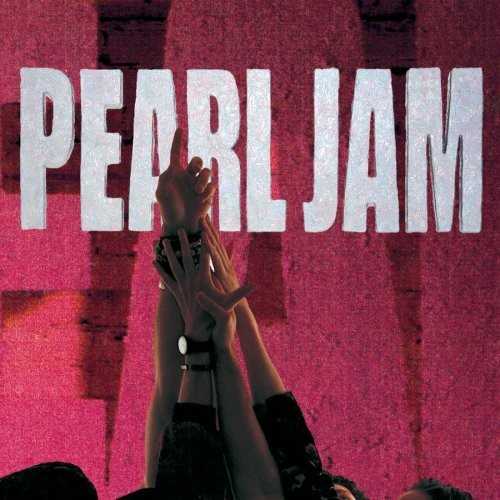 | Rank: 209 Album: 9 of 50 Artist: Pearl Jam Title: Ten Released: 1991-08-27 Tracks: 28 Duration: 2:11:55 Scroll: Up Down Top Bottom 25% 50% 75% Spotify Allmusic AlbumCover | 1 Once (03:51) 2 Even Flow (04:53) 3 Alive (05:41) 4 Why Go (03:19) 5 Black (05:43) 6 Jeremy (05:19) 7 Oceans (02:41) 8 Porch (03:30) 9 Garden (04:58) 10 Deep (04:18) 11 Release / Master/Slave (09:06) 1 Once (03:51) 2 Even Flow (04:53) 3 Alive (05:41) 4 Why Go (03:19) 5 Black (05:38) 6 Jeremy (05:19) 7 Oceans (02:41) 8 Porch (03:30) 9 Garden (04:58) 10 Deep (04:18) 11 Release / Master/Slave (08:59) 12 Brother (03:59) 13 Just a Girl (05:02) 14 Breath and a Scream (05:58) 15 State of Love and Trust (04:48) 16 2,000 Mile Blues (03:58) 17 Evil Little Goat (01:29) |
| Ten : Allmusic album Review : Nirvanas Nevermind may have been the album that broke grunge and alternative rock into the mainstream, but theres no overestimating the role that Pearl Jams Ten played in keeping them there. Nirvanas appeal may have been huge, but it wasnt universal; rock radio still viewed them as too raw and punky, and some hard rock fans dismissed them as weird misfits. In retrospect, its easy to see why Pearl Jam clicked with a mass audience -- they werent as metallic as Alice in Chains or Soundgarden, and of Seattles Big Four, their sound owed the greatest debt to classic rock. With its intricately arranged guitar textures and expansive harmonic vocabulary, Ten especially recalled Jimi Hendrix and Led Zeppelin. But those touchstones might not have been immediately apparent, since -- aside from Mike McCreadys Clapton/Hendrix-style leads -- every trace of blues influence has been completely stripped from the bands sound. Though they rock hard, Pearl Jam is too anti-star to swagger, too self-aware to puncture the albums air of gravity. Pearl Jam tackles weighty topics -- abortion, homelessness, childhood traumas, gun violence, rigorous introspection -- with an earnest zeal unmatched since mid-80s U2, whose anthemic sound they frequently strive for. Similarly, Eddie Vedders impressionistic lyrics often make their greatest impact through the passionate commitment of his delivery rather than concrete meaning. His voice had a highly distinctive timbre that perfectly fit the albums warm, rich sound, and thats part of the key -- no matter how cathartic Tens tersely titled songs got, they were never abrasive enough to affect the albums accessibility. Ten also benefited from a long gestation period, during which the band honed the material into this tightly focused form; the result is a flawlessly crafted hard rock masterpiece. | ||
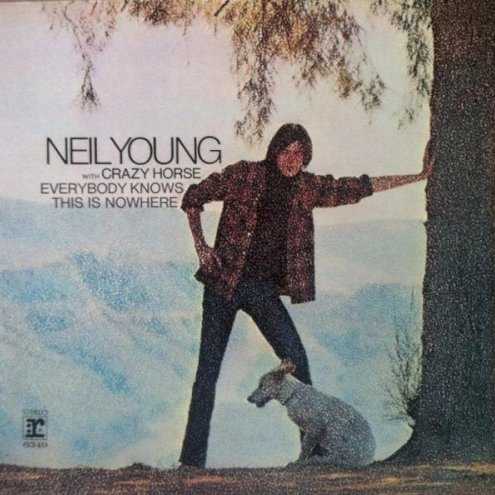 | Rank: 210 Album: 10 of 50 Artist: Neil Young with Crazy Horse Title: Everybody Knows This Is Nowhere Released: 1969-05-14 Tracks: 7 Duration: 40:30 Scroll: Up Down Top Bottom 25% 50% 75% Spotify Wikipedia Allmusic AlbumCover | 1 Cinnamon Girl (03:00) 2 Everybody Knows This Is Nowhere (02:28) 3 Round & Round (It Won’t Be Long) (05:53) 4 Down by the River (09:16) 5 The Losing End (When You’re On) (04:07) 6 Running Dry (Requiem for the Rockets) (05:36) 7 Cowgirl in the Sand (10:06) |
| Everybody Knows This Is Nowhere : Allmusic album Review : Neil Youngs second solo album, released only four months after his first, was nearly a total rejection of that polished effort. Though a couple of songs, "Round Round (It Wont Be Long)" and "The Losing End (When Youre On)," shared that albums country-folk style, they were altogether livelier and more assured. The difference was that, while Neil Young was a solo effort, Everybody Knows This Is Nowhere marked the beginning of Youngs recording association with Crazy Horse, the trio of Danny Whitten (guitar), Ralph Molina (drums), and Billy Talbot (bass) that Young had drawn from the struggling local Los Angeles group the Rockets. With them, Young quickly cut a set of loose, guitar-heavy rock songs -- "Cinnamon Girl," "Down by the River," and "Cowgirl in the Sand" -- that redefined him as a rock & roll artist. The songs were deliberately underwritten and sketchy as compositions, their lyrics more suggestive than complete, but that made them useful as frames on which to hang the extended improvisations ("River" and "Cowgirl" were each in the nine-to-ten-minute range) Young played with Crazy Horse and to reflect the ominous tone of his singing. Young lowered his voice from the near-falsetto employed on his debut to a more expressive range, and he sang with greater confidence, accompanied by Whitten and, on "Round Round," by Robin Lane. Everybody Knows This Is Nowhere was breathtakingly different when it appeared in May 1969, both for Young and for rock in general, and it reversed his commercial fortunes, becoming a moderate hit. (Youngs joining Crosby, Stills & Nash the month after its release didnt hurt his profile, of course.) A year and a half after its release, it became a gold album, and it has since gone platinum. And it set a musical pattern Young and his many musical descendants have followed ever since; almost 30 years later, he was still playing this sort of music with Crazy Horse, and a lot of contemporary bands were playing music clearly influenced by it. | ||
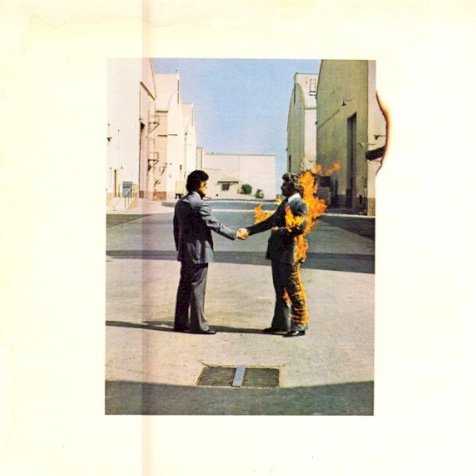 | Rank: 211 Album: 11 of 50 Artist: Pink Floyd Title: Wish You Were Here Released: 1975-09-12 Tracks: 2 Duration: 44:13 Scroll: Up Down Top Bottom 25% 50% 75% Spotify TrackSamples Allmusic AlbumCover | 1 Shine On You Crazy Diamond (Part 1) / Shine On You Crazy Diamond (Part 2) / Shine On You Crazy Diamond (Part 3) / Shine On You Crazy Diamond (Part 4) / Shine On You Crazy Diamond (Part 5) / Welcome to the Machine (21:02) 2 Have a Cigar / Wish You Were Here / Shine On You Crazy Diamond (Part 6) / Shine On You Crazy Diamond (Part 7) / Shine On You Crazy Diamond (Part 8) / Shine On You Crazy Diamond (Part 9) (23:10) |
| Wish You Were Here : Allmusic album Review : Pink Floyd followed the commercial breakthrough of Dark Side of the Moon with Wish You Were Here, a loose concept album about and dedicated to their founding member Syd Barrett. The record unfolds gradually, as the jazzy textures of "Shine on You Crazy Diamond" reveal its melodic motif, and in its leisurely pace, the album shows itself to be a warmer record than its predecessor. Musically, its arguably even more impressive, showcasing the groups interplay and David Gilmours solos in particular. And while its short on actual songs, the long, winding soundscapes are constantly enthralling. | ||
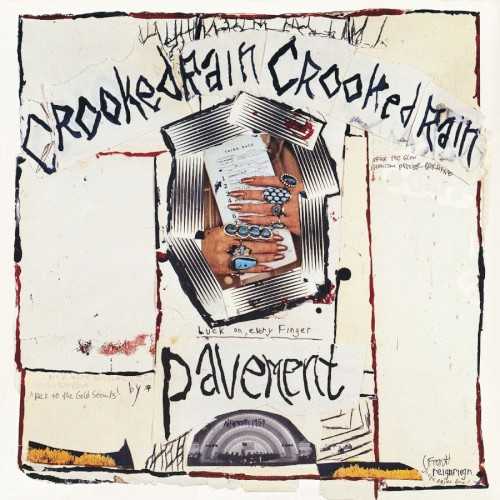 | Rank: 212 Album: 12 of 50 Artist: Pavement Title: Crooked Rain, Crooked Rain Released: 1994-02-14 Tracks: 49 Duration: 2:38:24 Scroll: Up Down Top Bottom 25% 50% 75% Spotify TrackSamples Wikipedia Wikipedia Allmusic AlbumCover | 1 Silence Kid (03:00) 2 Elevate Me Later (02:51) 3 Stop Breathin (04:27) 4 Cut Your Hair (03:06) 5 Newark Wilder (03:53) 6 Unfair (02:33) 7 Gold Soundz (02:39) 8 5 − 4 = Unity (02:09) 9 Range Life (04:54) 10 Heaven Is a Truck (02:30) 11 Hit the Plane Down (03:36) 12 Fillmore Jive (06:38) 13 Camera (03:45) 14 Stare (02:51) 15 Raft (03:34) 16 Coolin’ by Sound (02:50) 17 Kneeling Bus (01:34) 18 Strings of Nashville (03:46) 19 Exit Theory (00:59) 20 5 − 4 Vocal (02:08) 21 Jam Kids (04:54) 22 Haunt You Down (04:51) 23 Unseen Power of the Picket Fence (03:51) 24 Nail Clinic (02:25) 1 All My Friends (05:12) 2 Soiled Little Filly (02:08) 3 Range Life (04:11) 4 Stop Breathing (03:54) 5 Ell Ess Two (02:44) 6 Flux = Rad (02:11) 7 Bad Version of War (03:27) 8 Same Way of Saying (04:35) 9 Hands off the Bayou (02:43) 10 Heaven Is a Truck (Egg Shell) (02:20) 11 Grounded (03:35) 12 Kennel District (03:24) 13 Pueblo (Beach Boys) (03:47) 14 Fucking Righteous (02:47) 15 Colorado (01:13) 16 Dark Ages (02:39) 17 Flood Victim (01:17) 18 JMC Retro (00:52) 19 Rug Rat (03:05) 20 Strings of Nashville (instrumental) (03:50) 21 Instrumental (03:40) 22 Brink of the Clouds (03:48) 23 Tartar Martyr (03:13) 24 Pueblo Domain (04:18) 25 The Sutcliffe Catering Song (03:22) |
| Crooked Rain, Crooked Rain : Allmusic album Review : It may be a bit reductive to call Crooked Rain, Crooked Rain the Reckoning to Slanted & Enchanteds Murmur -- not to mention easy, considering that Pavement recorded a song-long tribute to R.E.M.s second album during the Crooked Rain sessions -- but theres a certain truth in that statement all the same. Slanted & Enchanted is an enigmatic masterpiece, retaining its mystique after countless spins, but Crooked Rain strips away the hiss and fog of S&E, removing some of Pavements mystery yet retaining their fractured sound and spirit. Its filled with loose ends and ragged transitions, but compared to the fuzzy, dense Slanted, Crooked Rain is direct and immediately engaging -- it puts the bands casual melodicism, sprawling squalls of feedback, disheveled country-rock, and Stephen Malkmus deft wordplay in sharp relief. Its the sound of a band discovering its own voice as a band, which is only appropriate because up until Crooked Rain, Pavement was more of a recording project between Malkmus and Scott Kannberg than a full-fledged rock & roll group. During the supporting tour for Slanted, Malkmus and Kannberg recruited bassist Mark Ibold and percussionist Bob Nastanovich, and original drummer Gary Young was replaced by Steve West early into the recording for this album, and the new blood gives the band a different feel, even if the aesthetic hasnt changed much. The full band gives the music a richer, warmer vibe thats as apparent on the rampaging, noise-ravaged "Unfair" as it is on the breezy, sun-kissed country-rock of "Range Life" or its weary, late-night counterpart, "Heaven Is a Truck." Pavement may still be messy, but its a meaningful, musical messiness from the performance to the production: listen to how "Silence Kit" begins by falling into place with its layers of fuzz guitars, wah wahs, cowbells, thumping bass, and drum fills, how what initially seems random gives way into a lush Californian pop song. Thats Crooked Rain a nutshell -- what initially seems chaotic has purpose, leading listeners into the bittersweet heart and impish humor at the core of the album. Many bands attempted to replicate the sound or the vibe of Crooked Rain, Crooked Rain, but they never came close to the quicksilver shifts in music and emotion that give this album such lasting appeal. Here, Pavement follow the heartbroken ballad "Stop Breathin" with the wry, hooky alt-rock hit "Cut Your Hair" without missing a beat. They throw out a jazzy Dave Brubeck tribute in "5-4=Unity" as easily as they mimic the Fall and mock the Happy Mondays on "Hit the Plane Down." By drawing on so many different influences, Pavement discovered its own distinctive voice as a band on Crooked Rain, Crooked Rain, creating a vibrant, dynamic, emotionally resonant album that stands as a touchstone of underground rock in the 90s and one of the great albums of its decade. | ||
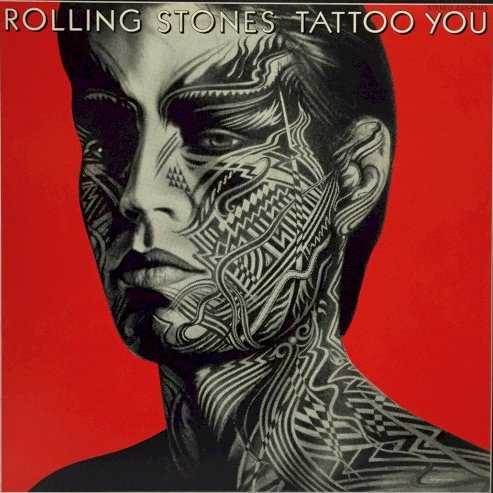 | Rank: 213 Album: 13 of 50 Artist: The Rolling Stones Title: Tattoo You Released: 1981-08-18 Tracks: 11 Duration: 44:32 Scroll: Up Down Top Bottom 25% 50% 75% Spotify TrackSamples Allmusic AlbumCover | 1 Start Me Up (03:33) 2 Hang Fire (02:21) 3 Slave (06:32) 4 Little T & A (03:24) 5 Black Limousine (03:34) 6 Neighbours (03:33) 7 Worried About You (05:17) 8 Tops (03:48) 9 Heaven (04:22) 10 No Use in Crying (03:29) 11 Waiting on a Friend (04:35) |
| Tattoo You : Allmusic album Review : Like Emotional Rescue before it, Tattoo You was comprised primarily of leftovers, but unlike its predecessor, it never sounds that way. Instead, Tattoo You captures the Stones at their best as a professional stadium-rock band. Divided into a rock & roll side and a ballad side, the album delivers its share of thrills on the tight, dynamic first side. "Start Me Up" became the records definitive Stonesy rocker, but the frenzied doo wop of "Hang Fire," the reggae jam of "Slave," the sleazy Chuck Berry rockers "Little T&A" and "Neighbours," and the hard blues of "Black Limousine" are all terrific. The ballad side suffers in comparison, especially since "Heaven" and "No Use in Crying" are faceless. But "Worried About You" and "Tops" are effortless, excellent ballads, and "Waiting on a Friend," with its Sonny Rollins sax solo, is an absolute masterpiece, with a moving lyric that captures Jagger in a shockingly reflective and affecting state of mind. "Waiting on a Friend" and the vigorous rock & roll of the first side make Tattoo You an essential latter-day Stones album, ranking just a few notches below Some Girls. | ||
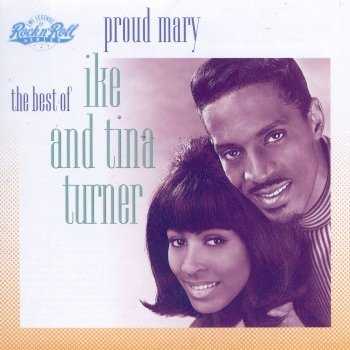 | Rank: 214 Album: 14 of 50 Artist: Ike & Tina Turner Title: Proud Mary: The Best of Ike and Tina Turner Released: 1991-03-26 Tracks: 23 Duration: 1:11:40 Scroll: Up Down Top Bottom 25% 50% 75% Spotify AlbumCover | 1 A Fool in Love (02:52) 2 I Idolize You (02:52) 3 Im Jealous (02:12) 4 Its Gonna Work Out Fine (03:03) 5 Poor Fool (02:33) 6 Tra La La La La (02:40) 7 You Shouda Treated Me Right (03:38) 8 Come Together (03:39) 9 Honky Tonk Women (03:10) 10 I Want to Take You Higher (02:52) 11 Workin Together (03:32) 12 Proud Mary (04:57) 13 Funkier Than a Mosquita’s Tweeter (02:34) 14 Ooh Poo Pah Doo (03:35) 15 Im Yours (Use Me Anyway You Wanna) (02:49) 16 Up in Heah (03:04) 17 River Deep - Mountain High (03:27) 18 Nutbush City Limits (02:57) 19 Sweet Rhode Island Red (03:15) 20 Sexy Ida (Part 1) (02:29) 21 Sexy Ida (Part 1) (03:00) 22 Baby - Get It On (03:11) 23 Acid Queen (03:09) |
 | Rank: 215 Album: 15 of 50 Artist: New York Dolls Title: New York Dolls Released: 1973-07-27 Tracks: 11 Duration: 42:42 Scroll: Up Down Top Bottom 25% 50% 75% Spotify TrackSamples Allmusic AlbumCover | 1 Personality Crisis (03:43) 2 Looking for a Kiss (03:20) 3 Vietnamese Baby (03:39) 4 Lonely Planet Boy (04:10) 5 Frankenstein (original) (06:00) 6 Trash (03:09) 7 Bad Girl (03:05) 8 Subway Train (04:22) 9 Pills (02:49) 10 Private World (03:40) 11 Jet Boy (04:40) |
| New York Dolls : Allmusic album Review : When the New York Dolls released their debut album in 1973, they managed to be named both "Best New Band" and "Worst Band" in Creem Magazines annual readers poll, and it usually takes something special to polarize an audience like that. And the Dolls were inarguably special -- decades after its release, New York Dolls still sounds thoroughly unique, a gritty, big-city amalgam of Stones-style R&B, hard rock guitars, lyrics that merge pulp storytelling with girl group attitude, and a sloppy but brilliant attack that would inspire punk rock (without the punks ever getting its joyous slop quite right). Much was made of the Dolls sexual ambiguity in the day, but with the passage of time, its a misfit swagger that communicates most strongly in these songs, and David Johansens vocals suggest the product of an emotional melting pot who just wants to find some lovin before Manhattan is gone, preferably from a woman who would prefer him over a fix. If the lyrics sometimes recall Hubert Selby, Jr. if hed had a playful side, the music is big, raucous hard rock, basic but with a strongly distinct personality -- the noisy snarl of Johnny Thunders lead guitar quickly became a touchstone, and if he didnt have a lot of tricks in his arsenal, he sure knew when and how to apply them, and the way he locked in with Syl Sylvains rhythm work was genius -- and the Dolls made their downtown decadence sound both ominous and funny at the same time. The Dolls were smart enough to know that a band needs a great drummer, and if theres something likably clumsy about Arthur Kanes bass work, Jerry Nolans superb, elemental drumming holds the pieces in place with no-nonsense precision at all times. "Lonely Planet Boy" proved the Dolls could dial down their amps and sound very much like themselves, "Pills" was a superbly chosen cover that seemed like an original once they were done with it, and "Personality Crisis," "Trash," and "Jet Boy" were downtown rock & roll masterpieces no other band could have created. And while New York Dolls clearly came from a very specific time and place, this album still sounds fresh and hasnt dated in the least -- this is one of rocks greatest debut albums, and a raucous statement of purpose thats still bold and thoroughly engaging. | ||
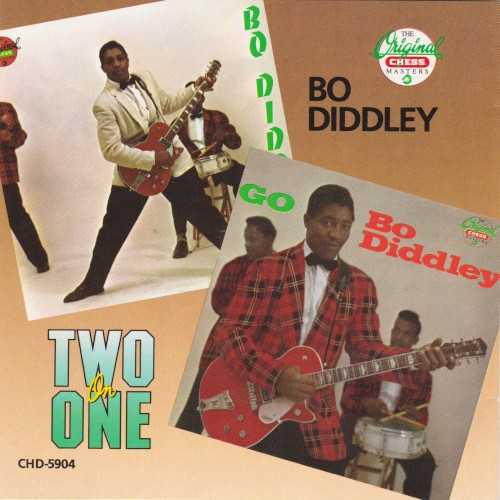 | Rank: 216 Album: 16 of 50 Artist: Bo Diddley Title: Bo Diddley / Go Bo Diddley Released: 1986 Tracks: 24 Duration: 1:03:48 Scroll: Up Down Top Bottom 25% 50% 75% Spotify AlbumCover | 1 Bo Diddley (02:30) 2 I’m a Man (02:47) 3 Bring It to Jerome (02:29) 4 Before You Accuse Me (03:06) 5 Hey Bo Diddley (02:13) 6 Dearest Darling (02:51) 7 Hush Your Mouth (02:52) 8 Say Boss Man (02:33) 9 Diddley Daddy (02:29) 10 Diddy Wah Diddy (02:31) 11 Who Do You Love? (02:30) 12 Pretty Thing (02:46) 13 Crackin’ Up (02:06) 14 I’m Sorry (02:26) 15 Bo’s Guitar (02:35) 16 Willie and Lillie (02:17) 17 You Don’t Love Me (You Don’t Care) (02:45) 18 Say Man (03:12) 19 The Great Grandfather (02:30) 20 Oh Yeah (03:08) 21 Don’t Let It Go (02:42) 22 Little Girl (02:32) 23 Dearest Darling (02:52) 24 Clock Strikes Twelve (02:59) |
 | Rank: 217 Album: 17 of 50 Artist: Bobby Bland Title: Two Steps From the Blues Released: 1961 Tracks: 12 Duration: 30:15 Scroll: Up Down Top Bottom 25% 50% 75% Spotify Allmusic AlbumCover | 1 Two Steps From the Blues (02:35) 2 Cry, Cry, Cry (02:43) 3 I’m Not Ashamed (02:36) 4 Don’t Cry No More (02:27) 5 Lead Me On (02:05) 6 I Pity the Fool (02:43) 7 I’ve Got to Forget You (02:34) 8 Little Boy Blue (02:38) 9 St. James Infirmary (02:26) 10 I’ll Take Care of You (02:25) 11 I Don’t Want No Woman (02:39) 12 I’ve Been Wrong So Long (02:18) |
| Two Steps From the Blues : Allmusic album Review : Without a doubt, Two Steps from the Blues is the definitive Bobby "Blue" Bland album and one of the great records in electric blues and soul-blues. In fact, its one of the key albums in modern blues, marking a turning point when juke joint blues were seamlessly blended with gospel and Southern soul, creating a distinctly Southern sound where all of these styles blended so thoroughly it was impossible to tell where one began and one ended. Given his Memphis background, Bobby "Blue" Bland was perfectly suited for this kind of amalgam as envisioned by producer/arranger Joe Scott, who crafted these wailing horn arrangements that sounded as impassioned as Blands full-throated, anguished vocals. It helped, of course, that the songs were uniformly brilliant. Primarily from the pen of Deadric Malone, along with Duke head Don Robey and Scott (among others), these are the tunes that form the core of Bobby "Blue" Blands legend and the foundation of soul-blues: "Two Steps from the Blues," "I Dont Want No Woman," "Cry, Cry, Cry," "Im Not Ashamed," "Lead Me On," "Little Boy Blue" -- songs so good they overshadow standards like "St. James Infirmary." These are songs that blur the division between Ray Charles soul and Chess blues, opening the doors for numerous soul and blues sounds, from Muscle Shoals and Stax through the modern-day soul-bluesman. Since this, like many blues albums from the late 50s/early 60s, was a collection of singles, its possible to find the key tracks, even the entire album, on the numerous Bobby "Blue" Bland collections released over the years, but this remains an excellent, essential blues album on its own terms -- one of the greatest ever released. | ||
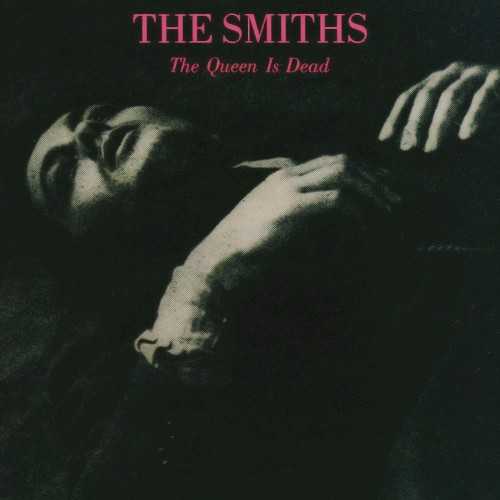 | Rank: 218 Album: 18 of 50 Artist: The Smiths Title: The Queen Is Dead Released: 1986-06-16 Tracks: 10 Duration: 37:04 Scroll: Up Down Top Bottom 25% 50% 75% Spotify TrackSamples Allmusic AlbumCover | 1 The Queen Is Dead (06:24) 2 Frankly, Mr. Shankly (02:19) 3 I Know It’s Over (05:49) 4 Never Had No One Ever (03:37) 5 Cemetry Gates (02:41) 6 Bigmouth Strikes Again (03:13) 7 The Boy With the Thorn in His Side (03:17) 8 Vicar in a Tutu (02:22) 9 There Is a Light That Never Goes Out (04:03) 10 Some Girls Are Bigger Than Others (03:15) |
| The Queen Is Dead : Allmusic album Review : Meat Is Murder may have been a holding pattern, but The Queen Is Dead is the Smiths great leap forward, taking the band to new musical and lyrical heights. Opening with the storming title track, The Queen Is Dead is a harder-rocking record than anything the Smiths had attempted before, but thats only on a relative scale -- although the backbeat is more pronounced, the group certainly doesnt rock in a conventional sense. Instead, Johnny Marr has created a dense web of guitars, alternating from the minor-key rush of "Bigmouth Strikes Again" and the faux rockabilly of "Vicar in a Tutu" to the bouncy acoustic pop of "Cemetry Gates" and "The Boy With the Thorn in His Side," as well as the lovely melancholy of "I Know Its Over" and "There Is a Light That Never Goes Out." And the rich musical bed provides Morrissey with the support for his finest set of lyrics. Shattering the myth that he is a self-pitying sap, Morrissey delivers a devastating set of clever, witty satires of British social mores, intellectualism, class, and even himself. He also crafts some of his finest, most affecting songs, particularly in the wistful "The Boy With the Thorn in His Side" and the epic "There Is a Light That Never Goes Out," two masterpieces that provide the foundation for a remarkable album. | ||
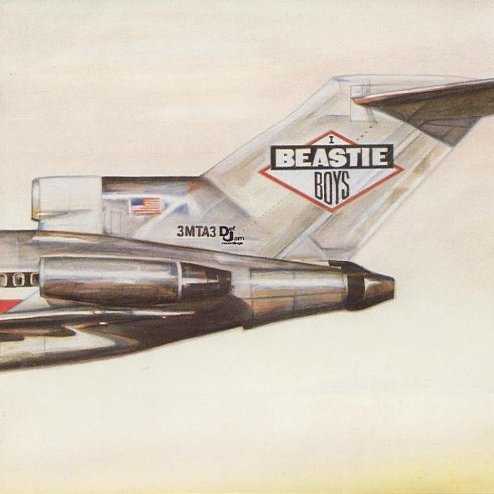 | Rank: 219 Album: 19 of 50 Artist: Beastie Boys Title: Licensed to Ill Released: 1986-11-15 Tracks: 13 Duration: 44:33 Scroll: Up Down Top Bottom 25% 50% 75% Spotify Wikipedia Allmusic AlbumCover | 1 Rhymin & Stealin (04:08) 2 The New Style (04:35) 3 She’s Crafty (03:35) 4 Posse in Effect (02:26) 5 Slow Ride (02:56) 6 Girls (02:13) 7 Fight for Your Right (03:27) 8 No Sleep Till Brooklyn (04:06) 9 Paul Revere (03:40) 10 Hold It Now, Hit It (03:26) 11 Brass Monkey (02:38) 12 Slow and Low (03:38) 13 Time to Get Ill (03:39) |
| Licensed to Ill : Allmusic album Review : Perhaps Licensed to Ill was inevitable -- a white group blending rock and rap, giving them the first number one album in hip-hop history. But that reading of the albums history gives short shrift to the Beastie Boys; producer Rick Rubin, and his label, Def Jam, and this remarkable record, since mixing metal and hip-hop isnt necessarily an easy thing to do. Just sampling and scratching Sabbath and Zeppelin to hip-hop beats does not make for an automatically good record, though there is a visceral thrill to hearing those muscular riffs put into overdrive with scratching. But, much of that is due to the producing skills of Rick Rubin, a metalhead who formed Def Jam Records with Russell Simmons and had previously flirted with this sound on Run-D.M.C.s Raising Hell, not to mention a few singles and one-offs with the Beasties prior to this record. He made rap rock, but to give him lone credit for Licensed to Ill (as some have) is misleading, since that very same combination would not have been as powerful, nor would it have aged so well -- aged into a rock classic -- if it werent for the Beastie Boys, who fuel this record through their passion for subcultures, pop culture, jokes, and the intoxicating power of wordplay. At the time, it wasnt immediately apparent that their obnoxious patter was part of a persona (a fate that would later plague Eminem), but the years have clarified that this was a joke -- although, listening to the cajoling rhymes, filled with clear parodies and absurdities, its hard to imagine the offense that some took at the time. Which, naturally, is the credit of not just the music -- they dont call it the devils music for nothing -- but the wild imagination of the Beasties, whose rhymes sear into consciousness through their gonzo humor and gleeful delivery. There hasnt been a funnier, more infectious record in pop music than this, and its not because the group is mocking rappers (in all honesty, the truly twisted barbs are hurled at frat boys and lager lads), but because theyve already created their own universe and points of reference, where its as funny to spit out absurdist rhymes and pound out "Fight for Your Right (To Party)" as it is to send up street corner doo wop with "Girls." Then, there is the overpowering loudness of the record -- operating from the axis of where metal, punk, and rap meet, there never has been a record this heavy and nimble, drunk on its own power yet giddy with what theyre getting away with. There is a sense of genuine discovery, of creating new music, that remains years later, after countless plays, countless misinterpretations, countless rip-off acts, even countless apologies from the Beasties, who seemed guilty by how intoxicating the sound of it is, how it makes beer-soaked hedonism sound like the apogee of human experience. And maybe it is, maybe it isnt, but in either case, Licensed to Ill reigns tall among the greatest records of its time. | ||
![Allmusic album Review : The second album by Art Nevilles band continues the sound that made them New Orleans legends. In addition to the title track, theres plenty of funk aboard in songs like like "Pungee," "9 Til 5," "Rigor Mortis," "Funky Miracle," and "Yeah, Youre Right." [Some reissues also feature two previously unreleased bonus tracks, "Grass" and "Borro."] look_ka_py_py](../../images/the_meters-look_ka_py_py.jpg) | Rank: 220 Album: 20 of 50 Artist: The Meters Title: Look-Ka Py Py Released: 1970-01 Tracks: 14 Duration: 37:20 Scroll: Up Down Top Bottom 25% 50% 75% Spotify TrackSamples Wikipedia Allmusic AlbumCover | 1 Look-Ka Py Py (03:16) 2 Rigor Mortis (02:38) 3 Pungee (03:00) 4 Thinking (01:43) 5 This Is My Last Affair (02:54) 6 Funky Miracle (02:26) 7 Yeah You’re Right (02:46) 8 Little Old Money Maker (02:41) 9 Oh, Calcutta! (02:45) 10 The Mob (02:49) 11 9 Til 5 (02:51) 12 Dry Spell (02:33) 13 Grass (02:42) 14 Borro (02:11) |
| Look-Ka Py Py : Allmusic album Review : The second album by Art Nevilles band continues the sound that made them New Orleans legends. In addition to the title track, theres plenty of funk aboard in songs like like "Pungee," "9 Til 5," "Rigor Mortis," "Funky Miracle," and "Yeah, Youre Right." [Some reissues also feature two previously unreleased bonus tracks, "Grass" and "Borro."] | ||
 | Rank: 221 Album: 21 of 50 Artist: My Bloody Valentine Title: Loveless Released: 1991-11-05 Tracks: 11 Duration: 48:40 Scroll: Up Down Top Bottom 25% 50% 75% Spotify Allmusic AlbumCover | 1 Only Shallow (04:18) 2 Loomer (02:38) 3 Touched (00:56) 4 To Here Knows When (05:31) 5 When You Sleep (04:11) 6 I Only Said (05:34) 7 Come in Alone (03:58) 8 Sometimes (05:19) 9 Blown a Wish (03:36) 10 What You Want (05:33) 11 Soon (07:01) |
| Loveless : Allmusic album Review : Isnt Anything was good enough to inspire an entire scene of My Bloody Valentine soundalikes, but Loveless greatness proved that the band was inimitable. After two painstaking years in the studio and nearly bankrupting their label Creation in the process, the group emerged with their masterpiece, which fulfilled all of the promise of their previous albums. If Isnt Anything was the Valentines sonic blueprint, then Loveless saw those plans fleshed out, in the most literal sense: "Loomer," "What You Want," and "To Here Knows When"s arrangements are so lush, theyre practically tangible. With its voluptuous yet ethereal melodies and arrangements, Loveless intimates sensuality and sexuality instead of stating them explicitly; Kevin Shields and Bilinda Butchers vocals meld perfectly with the trippy sonics around them, suggesting druggy sex or sexy drugs. From the commanding "Only Shallow" and "Come in Alone" to breathy reflections like "Sometimes" and "Blown a Wish," the album balances complexity and immediately memorable pop melodies with remarkable self-assurance, given its difficult creation. But Loveless doesnt just perfect the groups approach, it also hints at their continuing growth: "Soon" fuses the Valentines roaring guitars with a dance-inspired beat, while the symphonic interlude "Touched" suggests an updated take on Fripp and Enos pioneering guitar/electronics experiments. These glimpses into the bands evolution make Shields difficulty in delivering a follow-up to Loveless even more frustrating, but completely understandable -- the albums perfection sounded shoegazings death-knell and raised expectations for the next My Bloody Valentine album to unreasonably high levels. Though Shields collaborations with Yo La Tengo, Primal Scream, J Mascis, and others were often rewarding, they were no match for Loveless. However, as My Bloody Valentine fans -- and, apparently, Shields himself -- will attest, nothing is. | ||
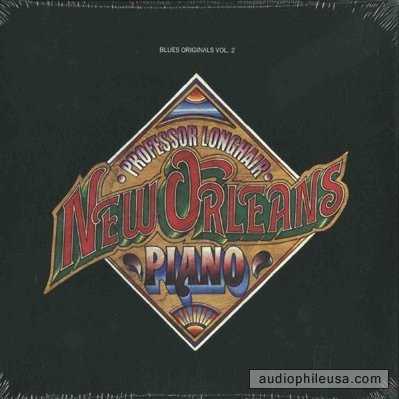 | Rank: 222 Album: 22 of 50 Artist: Professor Longhair Title: New Orleans Piano Released: 1972 Tracks: 16 Duration: 44:55 Scroll: Up Down Top Bottom 25% 50% 75% Spotify Allmusic AlbumCover | 1 In the Night (02:32) 2 Tipitina (02:24) 3 Tipitina (02:39) 4 Ball the Wall (03:18) 5 Who’s Been Fooling You (02:11) 6 Hey Now Baby (02:57) 7 Mardi Gras in New Orleans (02:52) 8 She Walks Right In (03:09) 9 Hey Little Girl (03:02) 10 Willie Mae (02:48) 11 Walk Your Blues Away (02:56) 12 Professor Longhair Blues (02:28) 13 Boogie Woogie (02:40) 14 Longhair’s Blues-Rhumba (03:14) 15 Mardi Gras in New Orleans (02:52) 16 She Walks Right In (02:48) |
| New Orleans Piano : Allmusic album Review : All 16 of Professor Longhairs Atlantic sides from 1949 and 1953 (including a handful of alternate takes) are here on one glorious disc. Longhairs work for the label was famously marvelous -- this version of "Mardi Gras in New Orleans" reeks of revelry in the streets of the French Quarter, "She Walks Right In" and "Walk Your Blues Away" ride a bedrock boogie, and "In the Night" bounces atop a parade-beat shuffle groove and hard-charging saxes. | ||
 | Rank: 223 Album: 23 of 50 Artist: U2 Title: War Released: 1983-02-28 Tracks: 10 Duration: 42:08 Scroll: Up Down Top Bottom 25% 50% 75% Spotify TrackSamples Wikipedia Allmusic AlbumCover | 1 Sunday Bloody Sunday (04:40) 2 Seconds (03:10) 3 New Year’s Day (05:35) 4 Like a Song… (04:46) 5 Drowning Man (04:14) 6 The Refugee (03:40) 7 Two Hearts Beat as One (04:03) 8 Red Light (03:46) 9 Surrender (05:34) 10 “40” (02:35) |
| War : Allmusic album Review : Opening with the ominous, fiery protest of "Sunday Bloody Sunday," War immediately announces itself as U2s most focused and hardest-rocking album to date. Blowing away the fuzzy, sonic indulgences of October with propulsive, martial rhythms and shards of guitar, War bristles with anger, despair, and above all, passion. Previously, Bonos attempts at messages came across as grandstanding, but his vision becomes remarkably clear on this record, as his anthems ("New Years Day," "40," "Seconds") are balanced by effective, surprisingly emotional love songs ("Two Hearts Beat as One"), which are just as desperate and pleading as his protests. He performs the difficult task of making the universal sound personal, and the band helps him out by bringing the songs crashing home with muscular, forceful performances that reveal their varied, expressive textures upon repeated listens. U2 always aimed at greatness, but War was the first time they achieved it. | ||
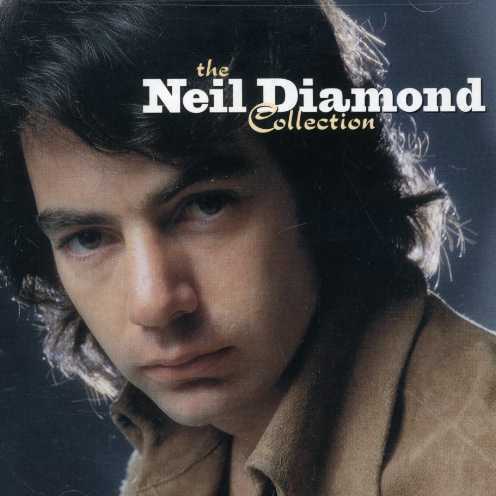 | Rank: 224 Album: 24 of 50 Artist: Neil Diamond Title: The Neil Diamond Collection Released: 1999-11-23 Tracks: 18 Duration: 1:05:20 Scroll: Up Down Top Bottom 25% 50% 75% Spotify Wikipedia AlbumCover | 1 Sweet Caroline (03:22) 2 Cracklin’ Rosie (03:01) 3 Song Sung Blue (03:19) 4 Play Me (03:52) 5 Brooklyn Roads (03:40) 6 Shilo (03:00) 7 Crunchy Granola Suite (02:56) 8 And the Grass Won’t Pay No Mind (03:32) 9 Holly Holy (04:43) 10 Brother Loves Travelling Salvation Show (03:30) 11 Stones (03:07) 12 Soolaimon (04:25) 13 Walk on Water (03:06) 14 Cherry, Cherry (04:52) 15 I Am...I Said (03:35) 16 Done Too Soon (02:43) 17 Morningside (04:20) 18 He Ain’t Heavy, He’s My Brother (04:11) |
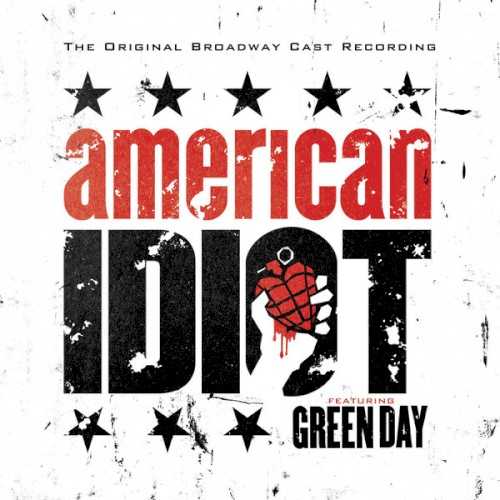 | Rank: 225 Album: 25 of 50 Artist: Green Day Title: American Idiot Released: 2004-09-20 Tracks: 13 Duration: 57:17 Scroll: Up Down Top Bottom 25% 50% 75% Spotify TrackSamples Allmusic AlbumCover | 1 American Idiot (02:55) 2 Jesus of Suburbia: I. Jesus of Suburbia / II. City of the Damned / III. I Don’t Care / IV. Dearly Beloved / V. Tales of Another Broken Home (09:08) 3 Holiday (03:52) 4 Boulevard of Broken Dreams (04:21) 5 Are We the Waiting (02:43) 6 St. Jimmy (02:55) 1 Give Me Novacaine (03:26) 2 She’s a Rebel (02:00) 3 Extraordinary Girl (03:34) 4 Letterbomb (04:06) 5 Wake Me Up When September Ends (04:45) 6 Homecoming: I. The Death of St. Jimmy / II. East 12th St. / III. Nobody Likes You / IV. Rock and Roll Girlfriend / V. We’re Coming Home Again (09:19) 7 Whatsername (04:12) |
| American Idiot : Allmusic album Review : Its a bit tempting to peg Green Days sprawling, ambitious, brilliant seventh album, American Idiot, as their version of a Who album, the next logical step forward from the Kinks-inspired popcraft of their underrated 2000 effort, Warning, but things arent quite that simple. American Idiot is an unapologetic, unabashed rock opera, a form that Pete Townshend pioneered with Tommy, but Green Day doesnt use that for a blueprint as much as they use the Whos mini-opera "A Quick One, While Hes Away," whose whirlwind succession of 90-second songs isnt only emulated on two song suites here, but provides the template for the larger 13-song cycle. But the Who are only one of many inspirations on this audacious, immensely entertaining album. The story of St. Jimmy has an arc similar to Hüsker Düs landmark punk-opera Zen Arcade, while the music has grandiose flourishes straight out of both Queen and Rocky Horror Picture Show (the 50s pastiche "Rock and Roll Girlfriend" is punk rock Meat Loaf), all tied together with a nervy urgency and a political passion reminiscent of the Clash, or all the anti-Reagan American hardcore bands of the 80s. These are just the clearest touchstones for American Idiot, but reducing the album to its influences gives the inaccurate impression that this is no more than a patchwork quilt of familiar sounds, when its an idiosyncratic, visionary work in its own right. First of all, part of Green Days appeal is how they have personalized the sounds of the past, making time-honored guitar rock traditions seem fresh, even vital. With their first albums, they styled themselves after first-generation punk they were too young to hear firsthand, and as their career progressed, the group not only synthesized these influences into something distinctive, but chief songwriter Billie Joe Armstrong turned into a muscular, versatile songwriter in his own right. Warning illustrated their growing musical acumen quite impressively, but here, the music isnt only tougher, its fluid and, better still, it fuels the anger, disillusionment, heartbreak, frustration, and scathing wit at the core of American Idiot. And one of the truly startling things about American Idiot is how the increased musicality of the band is matched by Armstrongs incisive, cutting lyrics, which effectively convey the paranoia and fear of living in American in days after 9/11, but also veer into moving, intimate small-scale character sketches. Theres a lot to absorb here, and cynics might dismiss it after one listen as a bit of a mess when its really a rich, multi-faceted work, one that is bracing upon the first spin and grows in stature and becomes more addictive with each repeated play. Like all great concept albums, American Idiot works on several different levels. It can be taken as a collection of great songs -- songs that are as visceral or as poignant as Green Day at their best, songs that resonate outside of the larger canvas of the story, as the fiery anti-Dubya title anthem proves -- but these songs have a different, more lasting impact when taken as a whole. While its breakneck, freewheeling musicality has many inspirations, there really arent many records like American Idiot (bizarrely enough, the Fiery Furnaces Blueberry Boat is one of the closest, at least on a sonic level, largely because both groups draw deeply from the kaleidoscopic "A Quick One"). In its musical muscle and sweeping, politically charged narrative, its something of a masterpiece, and one of the few -- if not the only -- records of 2004 to convey what it feels like to live in the strange, bewildering America of the early 2000s. | ||
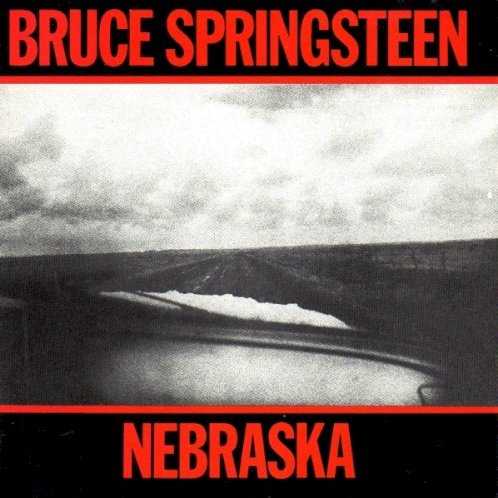 | Rank: 226 Album: 26 of 50 Artist: Bruce Springsteen Title: Nebraska Released: 1982-09-20 Tracks: 10 Duration: 40:44 Scroll: Up Down Top Bottom 25% 50% 75% Spotify TrackSamples Wikipedia Allmusic AlbumCover | 1 Nebraska (04:32) 2 Atlantic City (03:58) 3 Mansion on the Hill (04:08) 4 Johnny 99 (03:43) 5 Highway Patrolman (05:40) 6 State Trooper (03:17) 7 Used Cars (03:10) 8 Open All Night (02:58) 9 My Father’s House (05:07) 10 Reason to Believe (04:08) |
| Nebraska : Allmusic album Review : There is an adage in the record business that a recording artists demos of new songs often come off better than the more polished versions later worked up in a studio. But Bruce Springsteen was the first person to act on that theory, when he opted to release the demo versions of his latest songs, recorded with only acoustic or electric guitar, harmonica, and vocals, as his sixth album, Nebraska. It was really the content that dictated the approach, however. Nebraskas ten songs marked a departure for Springsteen, even as they took him farther down a road hed already been traveling. Gradually, his songs became darker and more pessimistic, and those on Nebraska marked a new low. They also found him branching out into better developed stories. The title track was a first-person account of the killing spree of mass murderer Charlie Starkweather. (It cant have been coincidental that the same story was told in director Terrence Malicks 1973 film Badlands, also used as a Springsteen song title.) That song set the tone for a series of portraits of small-time criminals, desperate people, and those who loved them. Just as the recordings were unpolished, the songs themselves didnt seem quite finished; sometimes the same line turned up in two songs. But that only served to unify the album. Within the difficult times, however, there was hope, especially as the album went on. "Open All Night" was a Chuck Berry-style rocker, and the album closed with "Reason to Believe," a song whose hard-luck verses were belied by the chorus -- even if the singer couldnt understand what it was, "people find some reason to believe." Still, Nebraska was one of the most challenging albums ever released by a major star on a major record label. | ||
 | Rank: 227 Album: 27 of 50 Artist: Pixies Title: Doolittle Released: 1989-04-17 Tracks: 15 Duration: 38:43 Scroll: Up Down Top Bottom 25% 50% 75% Spotify TrackSamples Wikipedia Allmusic AlbumCover | 1 Debaser (02:52) 2 Tame (01:55) 3 Wave of Mutilation (02:04) 4 I Bleed (02:34) 5 Here Comes Your Man (03:21) 6 Dead (02:21) 7 Monkey Gone to Heaven (02:56) 8 Mr. Grieves (02:05) 9 Crackity Jones (01:24) 10 La La Love You (02:43) 11 No. 13 Baby (03:51) 12 There Goes My Gun (01:49) 13 Hey (03:31) 14 Silver (02:25) 15 Gouge Away (02:44) |
| Doolittle : Allmusic album Review : After 1988s brilliant but abrasive Surfer Rosa, the Pixies sound couldnt get much more extreme. Their Elektra debut, Doolittle, reins in the noise in favor of pop songcraft and accessibility. Producer Gil Nortons sonic sheen adds some polish, but Black Francis tighter songwriting focuses the groups attack. Doolittles most ferocious moments, like "Dead," a visceral retelling of David and Bathshebas affair -- are more stylized than the groups past outbursts. Meanwhile, their poppy side surfaces on the irresistible single "Here Comes Your Man" and the sweetly surreal love song "La La Love You." The Pixies arty, noisy weirdness mix with just enough hooks to produce gleefully demented singles like "Debaser," -- inspired by Bunuels classic surrealist short Un Chien Andalou -- and "Wave of Mutilation," their surfy ode to driving a car into the sea. Though Doolittles sound is cleaner and smoother than the Pixies earlier albums, there are still plenty of weird, abrasive vignettes: the blankly psychotic "There Goes My Gun," "Crackity Jones," a song about a crazy roommate Francis had in Puerto Rico, and the nihilistic finale "Gouge Away." Meanwhile, "Tame," and "I Bleed" continue the Pixies penchant for cryptic kink. But the album doesnt just refine the Pixies sound; they also expand their range on the brooding, wannabe spaghetti western theme "Silver" and the strangely theatrical "Mr. Grieves." "Hey" and "Monkey Gone to Heaven," on the other hand, stretch Francis lyrical horizons: "Monkey"s elliptical environmentalism and "Hey"s twisted longing are the Pixies versions of message songs and romantic ballads. Their most accessible album, Doolittles wide-ranging moods and sounds make it one of their most eclectic and ambitious. A fun, freaky alternative to most other late-80s college rock, its easy to see why the album made the Pixies into underground rock stars. | ||
 | Rank: 228 Album: 28 of 50 Artist: Eric B. & Rakim Title: Paid in Full Released: 1987-07-07 Tracks: 10 Duration: 45:13 Scroll: Up Down Top Bottom 25% 50% 75% Spotify Allmusic AlbumCover | 1 I Ain’t No Joke (03:54) 2 Eric B. Is on the Cut (03:50) 3 My Melody (06:47) 4 I Know You Got Soul (04:44) 5 Move the Crowd (03:48) 6 Paid in Full (03:49) 7 As the Rhyme Goes On (04:01) 8 Chinese Arithmetic (04:08) 9 Eric B. Is President (06:18) 10 Extended Beat (03:49) |
| Paid in Full : Allmusic album Review : One of the most influential rap albums of all time, Eric B. & Rakims Paid in Full only continues to grow in stature as the record that ushered in hip-hops modern era. The stripped-down production might seem a little bare to modern ears, but Rakims technique on the mic still sounds utterly contemporary, even state-of-the-art -- and that from a record released in 1987, just one year after Run-D.M.C. hit the mainstream. Rakim basically invents modern lyrical technique over the course of Paid in Full, with his complex internal rhymes, literate imagery, velvet-smooth flow, and unpredictable, off-the-beat rhythms. The key cuts here are some of the most legendary rap singles ever released, starting with the duos debut sides, "Eric B. Is President" and "My Melody." "I Know You Got Soul" single-handedly kicked off hip-hops infatuation with James Brown samples, and Eric B. & Rakim topped it with the similarly inclined "I Aint No Joke," a stunning display of lyrical virtuosity. The title cut, meanwhile, planted the seeds of hip-hops material obsessions over a monumental beat. There are also three DJ showcases for Eric B., who like Rakim was among the technical leaders in his field. If sampling is the sincerest form of admiration in hip-hop, Paid in Full is positively worshipped. Just to name a few: Rakims tossed-off "pump up the volume," from "I Know You Got Soul," became the basis for M/A/R/R/S groundbreaking dance track; Eminem, a devoted Rakim student, lifted lines from "As the Rhyme Goes On" for the chorus of his own "The Way I Am"; and the percussion track of "Paid in Full" has been sampled so many times its almost impossible to believe it had a point of origin. Paid in Full is essential listening for anyone even remotely interested in the basic musical foundations of hip-hop -- this is the form in its purest essence. | ||
 | Rank: 229 Album: 29 of 50 Artist: Aerosmith Title: Toys in the Attic Released: 1975-04-08 Tracks: 9 Duration: 37:10 Scroll: Up Down Top Bottom 25% 50% 75% Spotify TrackSamples Wikipedia Allmusic AlbumCover | 1 Toys in the Attic (03:06) 2 Uncle Salty (04:09) 3 Adam’s Apple (04:34) 4 Walk This Way (03:41) 5 Big Ten Inch Record (02:15) 6 Sweet Emotion (04:34) 7 No More No More (04:34) 8 Round and Round (05:03) 9 You See Me Crying (05:11) |
| Toys in the Attic : Allmusic album Review : After nearly getting off the ground with Get Your Wings, Aerosmith finally perfected their mix of Stonesy raunch and Zeppelin-esque riffing with their third album, Toys in the Attic. The success of the album derives from a combination of an increased sense of songwriting skills and purpose. Not only does Joe Perry turn out indelible riffs like "Walk This Way," "Toys in the Attic," and "Sweet Emotion," but Steven Tyler has fully embraced sleaziness as his artistic muse. Taking his cue from the old dirty blues "Big Ten Inch Record," Tyler writes with a gleeful impishness about sex throughout Toys in the Attic, whether its the teenage heavy petting of "Walk This Way," the promiscuous "Sweet Emotion," or the double-entendres of "Uncle Salty" and "Adams Apple." The rest of Aerosmith, led by Perrys dirty, exaggerated riffing, provide an appropriately greasy backing. Before Toys in the Attic, no other hard rock band sounded like this. Sure, Aerosmith cribbed heavily from the records of the Rolling Stones, New York Dolls, and Led Zeppelin, but they didnt have any of the menace of their influences, nor any of their mystique. Aerosmith was a gritty, street-wise hard rock band who played their blues as blooze and were in it for a good time; Toys in the Attic crystallizes that attitude. | ||
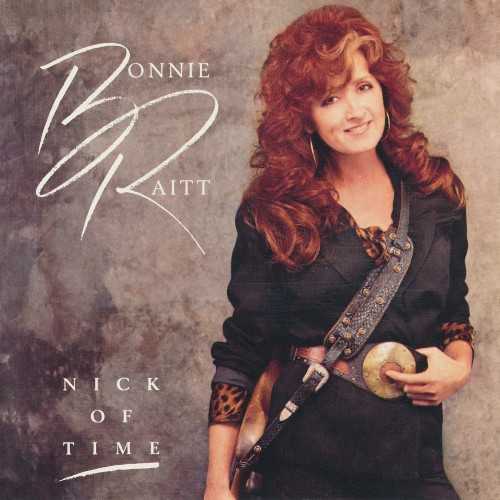 | Rank: 230 Album: 30 of 50 Artist: Bonnie Raitt Title: Nick of Time Released: 1989-03-21 Tracks: 11 Duration: 42:56 Scroll: Up Down Top Bottom 25% 50% 75% Spotify TrackSamples Wikipedia AlbumCover | 1 Nick of Time (03:52) 2 Thing Called Love (03:52) 3 Love Letter (04:04) 4 Cry on My Shoulder (03:44) 5 Real Man (04:27) 6 Nobody’s Girl (03:14) 7 Have a Heart (04:50) 8 Too Soon to Tell (03:45) 9 I Will Not Be Denied (04:55) 10 I Ain’t Gonna Let You Break My Heart Again (02:38) 11 The Road’s My Middle Name (03:31) |
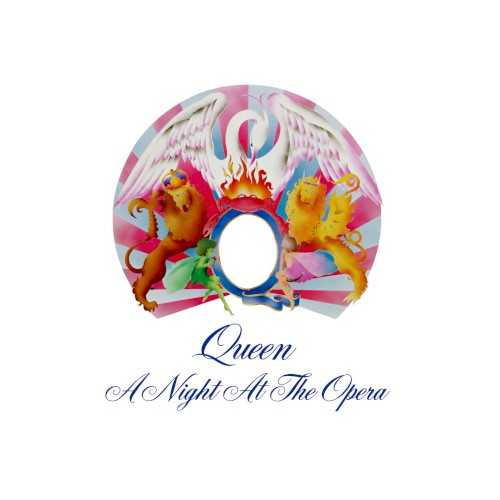 | Rank: 231 Album: 31 of 50 Artist: Queen Title: A Night at the Opera Released: 1975-11-21 Tracks: 12 Duration: 43:14 Scroll: Up Down Top Bottom 25% 50% 75% Spotify Allmusic AlbumCover | 1 Death on Two Legs (Dedicated to…… (03:43) 2 Lazing on a Sunday Afternoon (01:07) 3 I’m in Love With My Car (03:05) 4 You’re My Best Friend (02:52) 5 ’39 (03:31) 6 Sweet Lady (04:03) 7 Seaside Rendezvous (02:16) 8 The Prophet’s Song (08:21) 9 Love of My Life (03:38) 10 Good Company (03:23) 11 Bohemian Rhapsody (05:55) 12 God Save the Queen (01:15) |
| A Night at the Opera : Allmusic album Review : Queen were straining at the boundaries of hard rock and heavy metal on Sheer Heart Attack, but they broke down all the barricades on A Night at the Opera, a self-consciously ridiculous and overblown hard rock masterpiece. Using the multi-layered guitars of its predecessor as a foundation, A Night at the Opera encompasses metal ("Death on Two Legs," "Sweet Lady"), pop (the lovely, shimmering "Youre My Best Friend"), campy British music hall ("Lazing on a Sunday Afternoon," "Seaside Rendezvous"), and mystical prog rock ("39," "The Prophets Song"), eventually bringing it all together on the pseudo-operatic "Bohemian Rhapsody." In short, its a lot like Queens own version of Led Zeppelin IV, but where Zep find dark menace in bombast, Queen celebrate their own pomposity. No one in the band takes anything too seriously, otherwise the arrangements wouldnt be as ludicrously exaggerated as they are. But the appeal -- and the influence -- of A Night at the Opera is in its detailed, meticulous productions. Its prog rock with a sense of humor as well as dynamics, and Queen never bettered their approach anywhere else. | ||
 | Rank: 232 Album: 32 of 50 Artist: The Kinks Title: The Kink Kronikles Released: 1972-03-25 Tracks: 28 Duration: 1:27:00 Scroll: Up Down Top Bottom 25% 50% 75% Spotify Wikipedia AlbumCover | 1 Victoria (03:40) 2 The Village Green Preservation Society (02:49) 3 Berkeley Mews (02:40) 4 Holiday in Waikiki (02:46) 5 Willesden Green (02:27) 6 This Is Where I Belong (02:26) 7 Waterloo Sunset (03:21) 8 David Watts (02:39) 9 Dead End Street (03:25) 10 Shangri‐La (05:21) 11 Autumn Almanac (03:15) 12 Sunny Afternoon (03:37) 13 Get Back in Line (03:04) 14 Did You See His Name? (01:55) 1 Fancy (02:29) 2 Wonder Boy (02:50) 3 Apeman (03:52) 4 King Kong (03:26) 5 Mr. Pleasant (03:01) 6 Gods Children (03:19) 7 Death of a Clown (03:13) 8 Lola (04:06) 9 Mindless Child of Motherhood (03:13) 10 Polly (02:51) 11 Big Black Smoke (02:37) 12 Susannahs Still Alive (02:22) 13 Shes Got Everything (03:11) 14 Days (02:51) |
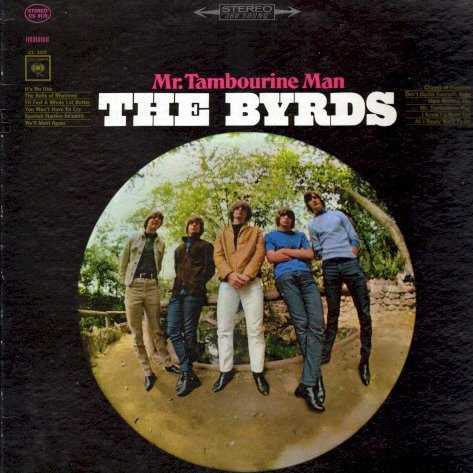 | Rank: 233 Album: 33 of 50 Artist: The Byrds Title: Mr. Tambourine Man Released: 1965-06-21 Tracks: 12 Duration: 30:51 Scroll: Up Down Top Bottom 25% 50% 75% Spotify TrackSamples Wikipedia Allmusic AlbumCover | 1 Mr. Tambourine Man (02:20) 2 I’ll Feel a Whole Lot Better (02:34) 3 Spanish Harlem Incident (02:00) 4 You Won’t Have to Cry (02:10) 5 Here Without You (02:38) 6 The Bells of Rhymney (03:33) 7 All I Really Want to Do (02:05) 8 I Knew I’d Want You (02:16) 9 It’s No Use (02:26) 10 Don’t Doubt Yourself, Babe (02:49) 11 Chimes of Freedom (03:52) 12 We’ll Meet Again (02:07) |
| Mr. Tambourine Man : Allmusic album Review : One of the greatest debuts in the history of rock, Mr. Tambourine Man was nothing less than a significant step in the evolution of rock & roll itself, demonstrating that intelligent lyrical content could be wedded to compelling electric guitar riffs and a solid backbeat. It was also the album that was most responsible for establishing folk-rock as a popular phenomenon, its most alluring traits being Roger McGuinns immediately distinctive 12-string Rickenbacker jangle and the bands beautiful harmonies. The material was uniformly strong, whether they were interpreting Bob Dylan (on the title cut and three other songs, including the hit single "All I Really Want to Do"), Pete Seeger ("The Bells of Rhymney"), or Jackie DeShannon ("Dont Doubt Yourself, Babe"). The originals were lyrically less challenging, but equally powerful musically, especially Gene Clarks "I Knew Id Want You," "Ill Feel a Whole Lot Better," and "Here Without You"; "Its No Use" showed a tougher, harder-rocking side and a guitar solo with hints of psychedelia. | ||
 | Rank: 234 Album: 34 of 50 Artist: Simon & Garfunkel Title: Bookends Released: 1968-04-03 Tracks: 14 Duration: 34:05 Scroll: Up Down Top Bottom 25% 50% 75% Spotify Wikipedia Allmusic AlbumCover | 1 Bookends Theme (00:32) 2 Save the Life of My Child (02:48) 3 America (03:35) 4 Overs (02:18) 5 Voices of Old People (02:07) 6 Old Friends (02:35) 7 Bookends Theme (01:22) 8 Fakin’ It (03:22) 9 Punky’s Dilemma (02:17) 10 Mrs. Robinson (03:55) 11 A Hazy Shade of Winter (02:17) 12 At the Zoo (02:22) 13 You Don’t Know Where Your Interest Lies (02:19) 14 Old Friends (demo) (02:11) |
| Bookends : Allmusic album Review : Simon & Garfunkel quietly slipped Bookends, their fourth album, into the bins with a whisper in March 1968. They are equal collaborators with producer/engineer Roy Halee in a multivalently layered song cycle observing the confusion of those seeking an elusive American Dream, wistfully reflecting on innocence lost forever to the cold winds of change. Bookends opens with an acoustic guitar stating a theme, slowly and plaintively. It erupts into the musical dissonance that introduces "Save the Life of My Child." Its uneasy rock & roll frames highly metaphorical and ironic lyrics and a nursery rhyme bridge. "America" is a folk song with a lilting soprano saxophone in its refrain as a small pipe organ paints acoustic guitars, framed by the ghostly traces of classic American Songbook pop structures. Two people travel the landscape by bus searching for the tracks subject, eventually discovering that everyone else on the freeway is too. Its sophisticated harmonic invention is toppled by its message; "America" becomes an ellipsis, a cipher, an unanswerable question. "Overs," a study about the end of a relationship, contains Halees ingenious use of sound: lighting a cigarette and inhaling and exhaling its smoke underscore the story told by the melody and lyrics. In a two-minute field recording of the voices of old people collected from nursing homes by Garfunkel, disembodied voices reveal entire lifetimes in a few seconds. "Old Friends" carries the message deeper. Simons image of two old men sitting on a park bench sharing memories and their fears of the changes surrounding them is indelible. A horn section threatens to interrupt their reverie, reflecting the chaos they perceive, but is warded off as the gentle melody returns and fades into the albums opening theme. In "Fakin It," Simon reveals the falsity inherent in modern life -- its better to appear to have it together than reflect the struggle of not being able to: "This feeling of fakin it/I still havent shaken it/I know Im fakin it/Im not really makin it." The albums final three tracks, "Mrs. Robinson" (the iconic theme song from the film The Graduate), "A Hazy Shade of Winter," and the albums concluding track, "At the Zoo," offer a tremblingly bleak vision of the future rooted in the lives of everyday people who "fake it," living an illusory dream publicly while trembling with confusion and fear in private (no matter ones generation), subverting the Madison Avenue notion of the "generation gap" simply and honestly. Bookends problematic, disillusioned themes, sometimes disguised in wry humor, striking arrangements, and augmented orchestral instrumentation, portray the sounds of people in an American life that they no longer understand, or understands them. Simon & Garfunkel never overstate; instead they observe, almost journalistically, enormous life and cultural questions in the process of them being asked. In just over 29 minutes, Bookends is stunning in its vision of a bewildered America in search of itself. | ||
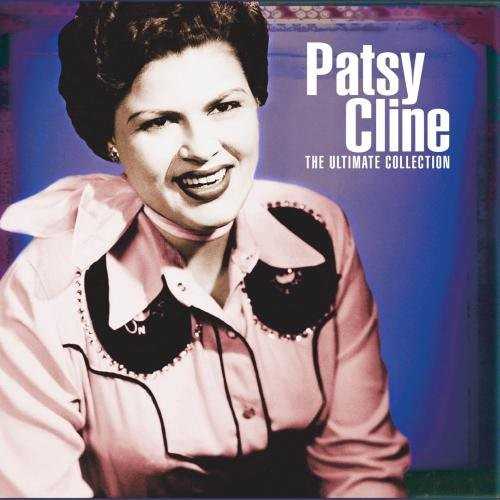 | Rank: 235 Album: 35 of 50 Artist: Patsy Cline Title: The Ultimate Collection Released: 2000-10-17 Tracks: 32 Duration: 1:22:39 Scroll: Up Down Top Bottom 25% 50% 75% Spotify Allmusic AlbumCover | 1 Walkin’ After Midnight (02:35) 2 A Poor Mans Heart (or a Rich Mans Gold) (02:47) 3 Lovesick Blues (02:20) 4 I Fall to Pieces (02:50) 5 True Love (02:09) 6 San Antonio Rose (02:21) 7 Crazy (02:44) 8 Have You Ever Been Lonely (Have You Ever Been Blue) (02:13) 9 South of the Border (Down Mexico Way) (02:26) 10 Strange (02:13) 11 I Love You So Much It Hurts (02:15) 12 Foolin Around (02:13) 13 Bill Bailey, Wont You Please Come Home (02:48) 14 She’s Got You (03:00) 15 Heartaches (02:12) 16 Your Cheatin Heart (02:22) 1 Anytime (01:59) 2 So Wrong (03:01) 3 Half as Much (02:29) 4 When I Get Thru With You (Youll Love Me Too) (02:39) 5 Imagine That (02:55) 6 When You Need a Laugh (02:51) 7 Why Cant He Be You (03:28) 8 Back in Baby’s Arms (02:05) 9 Leavin’ on Your Mind (02:27) 10 Faded Love (03:45) 11 Someday (Youll Want Me to Want You) (02:51) 12 Blue Moon of Kentucky (02:10) 13 Always (02:42) 14 He Called Me Baby (02:41) 15 Crazy Arms (02:25) 16 Sweet Dreams (of You) (02:34) |
| The Ultimate Collection : Allmusic album Review : UTVs 2000 release The Ultimate Collection spans two discs and 32 songs, considerably more than the 12 Greatest Hits that previously stood as the best, most concise overview of her career, yet more manageable than the 1991 box set, The Patsy Cline Collection, whose four discs do not lend themselves to an easy introduction. This two-disc set, however, does work as both a concise summary and good introduction, naturally containing all the classic hits, but digging deep enough into other areas -- smaller hits, album tracks, and earlier sessions -- to demonstrate the range and depth of her music. Serious fans will still want the box, and 12 Greatest Hits remains as perfect as greatest-hits albums get, but anybody who wants a more thorough selection of Patsy Clines best should turn here. | ||
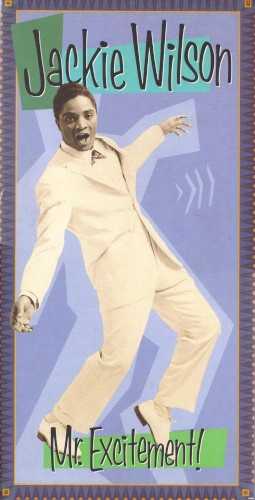 | Rank: 236 Album: 36 of 50 Artist: Jackie Wilson Title: Mr. Excitement! Released: 1992-11-10 Tracks: 48 Duration: 2:07:18 Scroll: Up Down Top Bottom 25% 50% 75% Wikipedia AlbumCover | 1 St. Louis Blues (Billy Ward & The Dominoes) (01:51) 2 St. Therese of the Roses (Billy Ward & The Dominoes) (03:11) 3 Reet Petite (The Finest Girl You Ever Want to Meet) (02:45) 4 By the Light of the Silvery Moon (02:20) 5 Danny Boy (version 1) (03:29) 6 Right Now! (02:21) 7 Im Wanderin (02:44) 8 We Have Love (02:25) 9 Singing a Song (02:19) 10 To Be Loved (02:30) 11 Lonely Teardrops (02:44) 12 Ill Be Satisfied (02:13) 13 You Better Know It (02:02) 14 Talk That Talk (02:17) 15 Only You, Only Me (03:14) 16 Hush-A-Bye (02:47) 17 Thats Why (I Love You So) (02:07) 18 I Know Ill Always Be in Love With You (02:40) 19 Wishing Well (02:30) 20 So Much (02:17) 21 Its All a Part of Love (02:27) 22 Night (02:49) 23 Doggin’ Around (02:56) 24 She Done Me Wrong (03:02) 1 Sazzle Dazzle (02:05) 2 (You Were Made For) All My Love (02:06) 3 A Woman, a Lover, a Friend (02:31) 4 Am I the Man (02:37) 5 Alone at Last (03:03) 6 My Empty Arms (02:53) 7 The Tear of the Year (02:39) 8 Your One and Only Love (02:42) 9 Please Tell Me Why (02:03) 10 Im Comin on Back to You (02:23) 11 Years From Now (02:38) 12 You Dont Know What It Means (03:26) 13 Stormy Weather (Keeps Rainin All the Time) (03:18) 14 Lonely Life (02:28) 15 My Heart Belongs to Only You (02:49) 16 The Greatest Hurt (03:12) 17 I Found Love (feat. Linda Hopkins) (02:52) 18 I Just Cant Help It (03:02) 19 Baby Workout (03:03) 20 Shake a Hand (feat. Linda Hopkins) (03:07) 21 Squeeze Her-Tease Her (But Love Her) (02:00) 22 Ive Got to Get Back (Country Boy) (03:04) 23 Silent One (02:32) 24 Shes All Right (02:23) |
 | Rank: 237 Album: 37 of 50 Artist: The Who Title: My Generation Released: 1965-12-03 Tracks: 12 Duration: 35:25 Scroll: Up Down Top Bottom 25% 50% 75% Spotify Wikipedia Allmusic AlbumCover | 1 Out in the Street (02:32) 2 I Don’t Mind (02:36) 3 The Good’s Gone (04:01) 4 La‐La‐La‐Lies (02:17) 5 Much Too Much (02:45) 6 My Generation (03:18) 7 Kids Are Alright (02:46) 8 Please, Please, Please (02:46) 9 It’s Not True (02:33) 10 The Ox (03:50) 11 A Legal Matter (02:48) 12 Instant Party (Circles) (03:12) |
| My Generation : Allmusic album Review : An explosive debut, and the hardest mod pop recorded by anyone. At the time of its release, it also had the most ferociously powerful guitars and drums yet captured on a rock record. Pete Townshends exhilarating chord crunches and guitar distortions threaten to leap off the grooves on "My Generation" and "Out in the Street"; Keith Moon attacks the drums with a lightning, ruthless finesse throughout. Some "Maximum R&B" influence lingered in the two James Brown covers, but much of Townshends original material fused Beatlesque hooks and power chords with anthemic mod lyrics, with "The Goods Gone," "Much Too Much," "La La La Lies," and especially "The Kids Are Alright" being highlights. "A Legal Matter" hinted at more ambitious lyrical concerns, and "The Ox" was instrumental mayhem that pushed the envelope of 1965 amplification with its guitar feedback and nonstop crashing drum rolls. While the execution was sometimes crude, and the songwriting not as sophisticated as it would shortly become, the Who never surpassed the pure energy level of this record. | ||
 | Rank: 238 Album: 38 of 50 Artist: Howlin’ Wolf Title: Howlin’ Wolf Released: 1962-01-11 Tracks: 12 Duration: 31:22 Scroll: Up Down Top Bottom 25% 50% 75% Spotify Wikipedia Allmusic AlbumCover | 1 Shake for Me (02:16) 2 Red Rooster (02:27) 3 You’ll Be Mine (02:27) 4 Who’s Been Talkin’? (02:23) 5 Wang Dang Doodle (02:25) 6 Little Baby (02:46) 7 Spoonful (02:45) 8 Going Down Slow (03:23) 9 Down in the Bottom (02:10) 10 Back Door Man (02:50) 11 Howlin’ for My Darling (02:33) 12 Tell Me (02:56) |
| Howlin’ Wolf : Allmusic album Review : Howlin Wolfs second album brings together some of the blues greats best singles from the late 50s and early 60s. Also available as a fine two-fer with his debut, Moanin in the Moonlight, the so-called Rockin Chair Album represents the cream of Wolfs Chicago blues work. Those tracks afforded classic status are many, including "Spoonful," "The Red Rooster," "Wang Dang Doodle," "Back Door Man," "Shake for Me," and "Whos Been Talking?" Also featuring the fine work of Chess house producer and bassist Willie Dixon and guitarist Hubert Sumlin, Rockin Chair qualifies as one of pinnacles of early electric blues, and is an essential album for any quality blues collection. | ||
 | Rank: 239 Album: 39 of 50 Artist: Madonna Title: Like a Prayer Released: 1989-03-20 Tracks: 11 Duration: 51:14 Scroll: Up Down Top Bottom 25% 50% 75% Spotify TrackSamples Wikipedia Allmusic AlbumCover | 1 Like a Prayer (05:42) 2 Express Yourself (04:39) 3 Love Song (04:53) 4 Till Death Do Us Part (05:18) 5 Promise to Try (03:38) 6 Cherish (05:03) 7 Dear Jessie (04:22) 8 Oh Father (04:59) 9 Keep It Together (05:03) 10 Spanish Eyes (05:18) 11 Act of Contrition (LP version) (02:19) |
| Like a Prayer : Allmusic album Review : Out of all of Madonnas albums, Like a Prayer is her most explicit attempt at a major artistic statement. Even though it is apparent that she is trying to make a "serious" album, the kaleidoscopic variety of pop styles on Like a Prayer is quite dazzling. Ranging from the deep funk of "Express Yourself" and "Keep It Together" to the haunting "Oh Father" and "Like a Prayer," Madonna displays a commanding sense of songcraft, making this her best and most consistent album. | ||
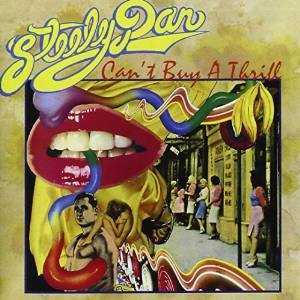 | Rank: 240 Album: 40 of 50 Artist: Steely Dan Title: Can’t Buy a Thrill Released: 1972-10 Tracks: 10 Duration: 41:01 Scroll: Up Down Top Bottom 25% 50% 75% Spotify Wikipedia Allmusic AlbumCover | 1 Do It Again (05:56) 2 Dirty Work (03:08) 3 Kings (03:45) 4 Midnite Cruiser (04:08) 5 Only a Fool Would Say That (02:57) 6 Reelin’ in the Years (04:37) 7 Fire in the Hole (03:28) 8 Brooklyn (Owes the Charmer Under Me) (04:21) 9 Change of the Guard (03:39) 10 Turn That Heartbeat Over Again (04:58) |
| Can’t Buy a Thrill : Allmusic album Review : Walter Becker and Donald Fagen were remarkable craftsmen from the start, as Steely Dans debut, Cant Buy a Thrill, illustrates. Each song is tightly constructed, with interlocking chords and gracefully interwoven melodies, buoyed by clever, cryptic lyrics. All of these are hallmarks of Steely Dans signature sound, but what is most remarkable about the record is the way it differs from their later albums. Of course, one of the most notable differences is the presence of vocalist David Palmer, a professional blue-eyed soul vocalist who oversings the handful of tracks where he takes the lead. Palmers very presence signals the one major flaw with the album -- in an attempt to appeal to a wide audience, Becker and Fagen tempered their wildest impulses with mainstream pop techniques. Consequently, there are very few of the jazz flourishes that came to distinguish their albums -- the breakthrough single, "Do It Again," does work an impressively tight Latin jazz beat, and "Reelin in the Years" has jazzy guitar solos and harmonies -- and the production is overly polished, conforming to all the conventions of early-70s radio. Of course, that gives these decidedly twisted songs a subversive edge, but compositionally, these arent as innovative as their later work. Even so, the best moments ("Dirty Work," "Kings," "Midnight Cruiser," "Turn That Heartbeat Over Again") are wonderful pop songs that subvert traditional conventions and more than foreshadow the paths Steely Dan would later take. | ||
 | Rank: 241 Album: 41 of 50 Artist: The Replacements Title: Let It Be Released: 1984-10-02 Tracks: 17 Duration: 54:27 Scroll: Up Down Top Bottom 25% 50% 75% Spotify TrackSamples Wikipedia Allmusic AlbumCover | 1 I Will Dare (03:18) 2 Favorite Thing (02:19) 3 We’re Comin’ Out (02:20) 4 Tommy Gets His Tonsils Out (01:53) 5 Androgynous (03:10) 6 Black Diamond (02:40) 7 Unsatisfied (04:01) 8 Seen Your Video (03:08) 9 Gary’s Got a Boner (02:28) 10 Sixteen Blue (04:23) 11 Answering Machine (03:54) 12 20th Century Boy (03:56) 13 Perfectly Lethal (03:30) 14 Temptation Eyes (02:30) 15 Answering Machine (solo home demo) (02:43) 16 Heartbeat – It’s a Lovebeat (rough mix) (02:55) 17 Sixteen Blue (alternate vocal) (05:08) |
| Let It Be : Allmusic album Review : Let It Be looms large among 80s rock albums, generally regarded as one of the greatest records of the decade. So large is its legend and so universal its acclaim that all the praise tends to give the impression that the Replacements fourth album was designed as a major statement, intended to be something important when its genius, like so many things involving the Mats, feels accidental. Compared to other underground landmarks from 1984, Let It Be feels small scale, as it lacks the grand, sprawling ambition of the Minutemens Double Nickels on the Dime or the dramatic intensity of Hüsker Düs Zen Arcade, or if the other side of the Atlantic is taken into equation, the clean sense of purpose of The Smiths. Nothing about Let It Be is clean; its all a ragged mess, careening wildly from dirty jokes to wounded ballads, from utter throwaways to songs haunting in their power. Unlike other classics, Let It Be needs those throwaways -- that Kiss cover, those songs about Tommy getting his tonsils out and Garys boner, that rant about phony rock & roll -- to lighten the mood and give the album its breathless pacing, but also because without these asides, the album wouldnt be true to the Replacements, who never separated high and low culture, who celebrated pure junk and reluctantly bared their soul. This blend of bluster and vulnerability is why the Replacements were perhaps the most beloved band of their era, as they captured all the chaos and confusion of coming of age in the midst of Reaganomics, and Let It Be is nothing if not a coming-of-age album, perched precisely between adolescence and adulthood. Theres just enough angst and tastelessness to have the album speak to teenagers of all generations and just enough complicated emotion to make this music resonate with listeners long past those awkward years, whether they grew up with this album or not. All this works because there is an utter lack of affect in Paul Westerbergs songs and unrestrained glee in the Replacements roar. Sure, Let It Be has moments where the thunder rolls away and Westerberg is alone, playing "Androgynous" on a piano and howling about having to say good night to an answering machine, but they flow naturally from the bands furious rock & roll, particularly because the raw, unsettled "Unsatisfied" acts as a bridge between these two extremes. But if Let It Be was all angst, it wouldnt have captured so many hearts in the 80s, becoming a virtual soundtrack to the decade for so many listeners, or continue to snag in new fans years later. Unlike so many teenage post-punk records, this doesnt dwell on the pain; it ramps up the jokes and, better still, offers a sense of endless possibilities, especially on the opening pair of "I Will Dare" and "Favorite Thing," two songs where it feels as if the world opened up because of these songs. And that sense of thrilling adventure isnt just due to Westerberg; its due to the Mats as a band, who have never sounded as ferocious and determined as they do here. Just a year earlier, they were playing almost everything for laughs on Hootenanny and just a year later a major-label contract helped pull all their sloppiness into focus on Tim, but here Chris Mars and Tommy Stinsons rhythms are breathlessly exciting and Bob Stinsons guitar wails as if nothing could ever go wrong. Of course, plenty went wrong for the Replacements not too much further down the road, but here they were fully alive as a band, living gloriously in the moment, a fleeting moment when anything and everything seems possible, and that moment still bursts to life whenever Let It Be is played. | ||
 | Rank: 242 Album: 42 of 50 Artist: Run‐D.M.C. Title: Run‐D.M.C. Released: 1984-03-27 Tracks: 9 Duration: 39:36 Scroll: Up Down Top Bottom 25% 50% 75% Spotify Allmusic AlbumCover | 1 Hard Times (03:54) 2 Rock Box (05:31) 3 Jam‐Master Jay (03:13) 4 Hollis Crew (Krush‐Groove 2) (03:15) 5 Sucker M.C.’s (Krush‐Groove 1) (03:10) 6 It’s Like That (04:50) 7 Wake Up (05:32) 8 30 Days (05:49) 9 Jay’s Game (04:19) |
| Run‐D.M.C. : Allmusic album Review : Years after the release of Run-D.M.C.s eponymous 1984 debut, the group generally was acknowledged to be hip-hops Beatles -- a sentiment that makes a lot of sense, even if Run-D.M.C. isnt quite the equivalent of a rap Please Please Me. Run-D.M.C. were the Beatles of rap because they signaled a cultural and musical change for the music, ushering it into its accepted form; neither group originated the music, but they gave it the shape known today. But, no matter how true and useful the comparison is, it is also a little misleading, because it implies that Run-D.M.C. also were a melodic, accessible group, bringing in elements from all different strands of popular music. No, Run-D.M.C.s expanded their music by making it tough and spare, primarily by adapting the sound and attitude of hard rock to hip-hop. Prior to this, rap felt like a block party -- the beats were funky and elastic, all about the groove. Run-D.M.C. hit hard. The production is tough and minimal, built on relentless drum machines and Jam Master Jays furious scratching, mixing in a guitar riff or a keyboard hit on occasion. It is brutal urban music, and Run and D.M.C.s forceful, muscular rhymes match the music. Where other MCs sounded cheerful, Run and D.M.C. prowl and taunt the listener, sounding as if they were a street gang. And while much of the record is devoted to braggadocio, boasting, and block parties, Run-D.M.C. also addressed grittier realities of urban life, giving this record both context and thematic weight. All of this -- the music, the attitude, the words, the themes -- marked a turning point for rap, and its impossible to calculate Run-D.M.C.s influence on all that came afterward. Years later, some of the production may sound a bit of its time, but the music itself does not because music this powerful and original always retains its impact and force as music. | ||
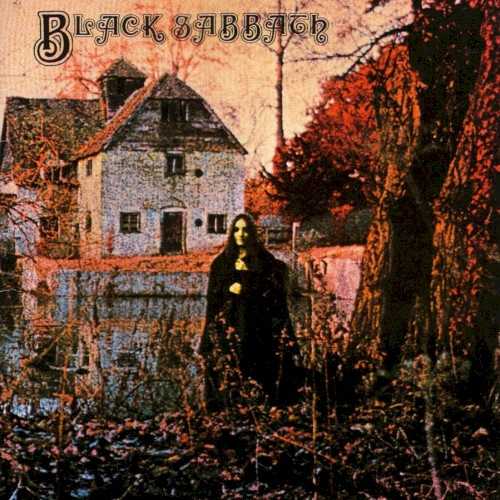 | Rank: 243 Album: 43 of 50 Artist: Black Sabbath Title: Black Sabbath Released: 1970-02-13 Tracks: 5 Duration: 39:28 Scroll: Up Down Top Bottom 25% 50% 75% Spotify Allmusic AlbumCover | 1 Black Sabbath (06:20) 2 The Wizard (04:23) 3 Wasp / Behind the Wall of Sleep / Bassically / N.I.B. (09:44) 4 Wicked World (04:44) 5 A Bit of Finger / Sleeping Village / Warning (14:15) |
| Black Sabbath : Allmusic album Review : Black Sabbaths debut album is the birth of heavy metal as we now know it. Compatriots like Blue Cheer, Led Zeppelin, and Deep Purple were already setting new standards for volume and heaviness in the realms of psychedelia, blues-rock, and prog rock. Yet of these metal pioneers, Sabbath are the only one whose sound today remains instantly recognizable as heavy metal, even after decades of evolution in the genre. Circumstance certainly played some role in the birth of this musical revolution -- the sonic ugliness reflecting the bleak industrial nightmare of Birmingham; guitarist Tony Iommis loss of two fingertips, which required him to play slower and to slacken the strings by tuning his guitar down, thus creating Sabbaths signature style. These qualities set the band apart, but they werent wholly why this debut album transcends its clear roots in blues-rock and psychedelia to become something more. Sabbaths genius was finding the hidden malevolence in the blues, and then bludgeoning the listener over the head with it. Take the legendary album-opening title cut. The standard pentatonic blues scale always added the tritone, or flatted fifth, as the so-called "blues note"; Sabbath simply extracted it and came up with one of the simplest yet most definitive heavy metal riffs of all time. Thematically, most of heavy metals great lyrical obsessions are not only here, theyre all crammed onto side one. "Black Sabbath," "The Wizard," "Behind the Wall of Sleep," and "N.I.B." evoke visions of evil, paganism, and the occult as filtered through horror films and the writings of J.R.R. Tolkien, H.P. Lovecraft, and Dennis Wheatley. Even if the album ended here, it would still be essential listening. Unfortunately, much of side two is given over to loose blues-rock jamming learned through Cream, which plays squarely into the bands limitations. For all his stylistic innovations and strengths as a composer, Iommi isnt a hugely accomplished soloist. By the end of the murky, meandering, ten-minute cover of the Aynsley Dunbar Retaliations "Warning," you can already hear him recycling some of the same simple blues licks he used on side one (plus, the word "warn" never even appears in the song, because Ozzy Osbourne misheard the original lyrics). (The British release included another cover, a version of Crows "Evil Woman" that doesnt quite pack the muscle of the bands originals; the American version substituted "Wicked World," which is much preferred by fans.) But even if the seams are still showing on this quickly recorded document, Black Sabbath is nonetheless a revolutionary debut whose distinctive ideas merely await a bit more focus and development. Henceforth Black Sabbath would forge ahead with a vision that was wholly theirs. | ||
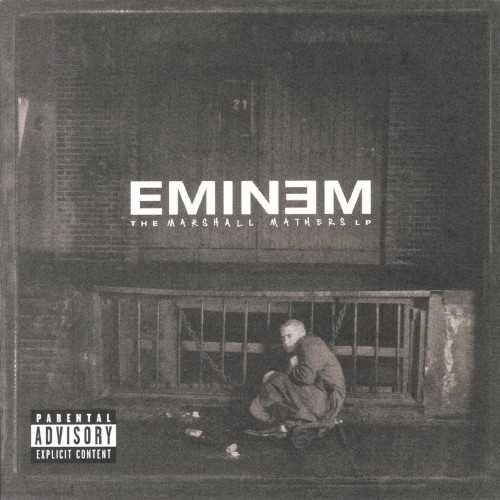 | Rank: 244 Album: 44 of 50 Artist: Eminem Title: The Marshall Mathers LP Released: 2000-05-22 Tracks: 18 Duration: 1:12:14 Scroll: Up Down Top Bottom 25% 50% 75% Spotify Wikipedia Allmusic AlbumCover | 1 Public Service Announcement 2000 (00:25) 2 Kill You (04:24) 3 Stan (06:43) 4 Paul (skit) (00:10) 5 Who Knew (03:47) 6 Steve Berman (00:53) 7 The Way I Am (04:50) 8 The Real Slim Shady (04:44) 9 Remember Me? (03:38) 10 I’m Back (05:10) 11 Marshall Mathers (05:20) 12 Ken Kaniff (skit) (01:01) 13 Drug Ballad (05:00) 14 Amityville (04:14) 15 Bitch Please II (04:48) 16 Kim (06:17) 17 Under the Influence (05:22) 18 Criminal (05:19) |
| The Marshall Mathers LP : Allmusic album Review : Its hard to know what to make of Eminem, even if you know that half of what he says is sincere and half is a put-on; the trick is realizing that theres truth in the joke, and vice versa. Many dismissed his considerable skills as a rapper and social satirist because the vulgarity and gross-out humor on The Slim Shady LP were too detailed for some to believe that it was anything but real. To Eminems credit, he decided to exploit that confusion on his masterful second record, The Marshall Mathers LP. Eminem is all about blurring the distinction between reality and fiction, humor and horror, satire and documentary, so it makes perfect sense that The Marshall Mathers LP is no more or no less "real" than The Slim Shady LP. It is, however, a fairly brilliant expansion of his debut, turning his spare, menacing hip-hop into a hyper-surreal, wittily disturbing thrill ride. Its both funnier and darker than his debut, and Eminems writing is so sharp and clever that the jokes cut as deeply as the explorations of his ruptured psyche. The production is nearly as evocative as the raps, with liquid basslines, stuttering rhythms, slight sound effects, and spacious soundscapes. There may not be overpowering hooks on every track, but the album works as a whole, always drawing the listener in. But, once youre in, Eminem doesnt care if you understand exactly where hes at, and he doesnt offer any apologies if you cant sort the fact from the fiction. As an artist, hes supposed to create his own world, and with this terrific second effort, he certainly has. It may be a world that is as infuriating as it is intriguing, but it is without question his own, which is far more than most of his peers are able to accomplish at the dawn of a new millennium. | ||
 | Rank: 245 Album: 45 of 50 Artist: Jerry Lee Lewis Title: All Killer No Filler! The Jerry Lee Lewis Anthology Released: 1993-05-18 Tracks: 42 Duration: 1:57:57 Scroll: Up Down Top Bottom 25% 50% 75% Spotify Wikipedia AlbumCover | 1 Crazy Arms (02:45) 2 End of the Road (01:49) 3 Itll Be Me (02:46) 4 All Night Long (02:04) 5 Whole Lotta Shakin Going On (02:55) 6 You Win Again (02:57) 7 Great Balls of Fire (01:52) 8 Down the Line (02:14) 9 Breathless (02:43) 10 High School Confidential (02:30) 11 Break Up (02:39) 12 In the Mood (02:21) 13 Im On Fire (02:25) 14 Money (Thats What I Want) (04:29) 15 Another Place, Another Time (02:26) 16 Whats Made Milwaukee Famous (Has Made a Loser Out of Me) (02:38) 17 She Still Comes Around (02:29) 18 To Make Love Sweeter For You (02:51) 19 Dont Let Me Cross Over (02:56) 20 One Has My Name (The Other Has My Heart) (02:40) 21 Invitation to Your Party (01:56) 1 She Even Woke Me Up to Say Goodbye (02:40) 2 One Minute Past Eternity (02:07) 3 I Cant Seem to Say Goodbye (02:35) 4 Once More With Feeling (02:26) 5 There Must Be More to Love Than This (02:44) 6 Please Dont Talk About Me When Im Gone (02:23) 7 Touching Home (02:36) 8 Would You Take Another Chance on Me (02:53) 9 Chantilly Lace (02:50) 10 No Headstone on My Grave (05:24) 11 Drinking Wine Spo-Dee ODee (03:40) 12 Sometimes a Memory Aint Enough (02:56) 13 Meat Man (master) (02:48) 14 He Cant Fill My Shoes (02:34) 15 Lets Put It Back Together Again (03:19) 16 Middle Age Crazy (03:55) 17 Come on In (02:32) 18 Ill Find It Where I Can (02:48) 19 Over the Rainbow (03:45) 20 Thirty Nine and Holding (02:58) 21 Rockin My Life Away (03:26) |
 | Rank: 246 Album: 46 of 50 Artist: The Mothers of Invention Title: Freak Out! Released: 1966-06-27 Tracks: 15 Duration: 1:00:27 Scroll: Up Down Top Bottom 25% 50% 75% Spotify Wikipedia Allmusic AlbumCover | 1 Hungry Freaks, Daddy (03:27) 2 I Ain’t Got No Heart (02:33) 3 Who Are the Brain Police? (03:33) 4 Go Cry on Somebody Else’s Shoulder (03:41) 5 Motherly Love (02:45) 6 How Could I Be Such a Fool? (02:13) 7 Wowie Zowie (02:53) 8 You Didn’t Try to Call Me (03:18) 9 Any Way the Wind Blows (02:55) 10 I’m Not Satisfied (02:38) 11 You’re Probably Wondering Why I’m Here (03:38) 12 Trouble Every Day (05:50) 13 Help, I’m a Rock (04:43) 14 It Can’t Happen Here (03:56) 15 The Return of the Son of Monster Magnet (12:19) |
| Freak Out! : Allmusic album Review : One of the most ambitious debuts in rock history, Freak Out! was a seminal concept album that somehow foreshadowed both art rock and punk at the same time. Its four LP sides deconstruct rock conventions right and left, eventually pushing into territory inspired by avant-garde classical composers. Yet the album is sequenced in an accessibly logical progression; the first half is dedicated to catchy, satirical pop/rock songs that question assumptions about pop music, setting the tone for the radical new directions of the second half. Opening with the nonconformist call to arms "Hungry Freaks, Daddy," Freak Out! quickly posits the Mothers of Invention as the antithesis of teen-idol bands, often with sneering mockeries of the teen-romance songs that had long been rocks commercial stock-in-trade. Despite his genuine emotional alienation and dissatisfaction with pop conventions, though, Frank Zappa was actually a skilled pop composer; even with the raw performances and his stinging guitar work, theres a subtle sophistication apparent in his unorthodox arrangements and tight, unpredictable melodicism. After returning to social criticism on the first song of the second half, the perceptive Watts riot protest "Trouble Every Day," Zappa exchanges pop song structure for experiments with musique concrète, amelodic dissonance, shifting time signatures, and studio effects. Its the first salvo in his career-long project of synthesizing popular and art music, high and low culture; while these pieces can meander, they virtually explode the limits of what can appear on a rock album, and effectively illustrate Freak Out!s underlying principles: acceptance of differences and free individual expression. Zappa would spend much of his career developing and exploring ideas -- both musical and conceptual -- first put forth here; while his myriad directions often produced more sophisticated work, Freak Out! contains at least the rudiments of almost everything that followed, and few of Zappas records can match its excitement over its own sense of possibility. | ||
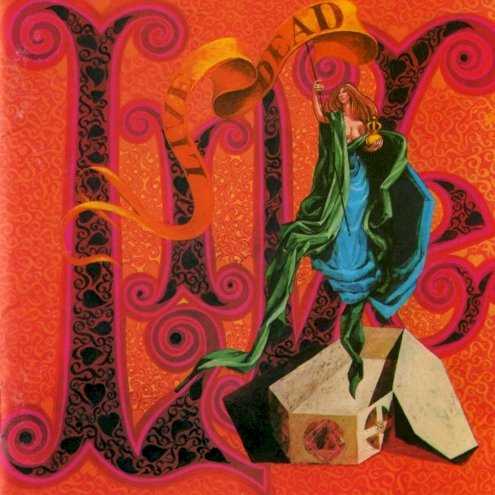 | Rank: 247 Album: 47 of 50 Artist: The Grateful Dead Title: Live/Dead Released: 1969-11-10 Tracks: 7 Duration: 1:13:26 Scroll: Up Down Top Bottom 25% 50% 75% Spotify Wikipedia Allmusic AlbumCover | 1 Dark Star (23:07) 2 St. Stephen (06:32) 3 The Eleven (09:21) 1 Turn On Your Lovelight (15:30) 2 Death Don’t Have No Mercy (10:29) 3 Feedback (07:49) 4 And We Bid You Goodnight (00:36) |
| Live/Dead : Allmusic album Review : The Grateful Deads fourth title was likewise their first extended concert recording. Spread over two LPs, Live/Dead (1969) finally was able to relay the intrinsic sonic magnificence of a Dead show in real time. Additionally, it unleashed several key entries into their repertoire, including the sidelong epic and Deadhead anthem"Dark Star" as well as wailing and otherwise electrified acidic covers of the Rev. Gary Davis blues standard "Death Dont Have No Mercy" and the R&B rave-up "(Turn on Your) Lovelight." Finally, the conundrum of how to bring a lengthy performance experience to the listener has been solved. The albums four sides provided the palette from which to replicate the natural ebb and flow of a typical Dead set circa early 1969. Tomes have been written about the profound impact of "Dark Star" on the Dead and their audience. It also became a cultural touchstone signifying that rock music was becoming increasingly experimental by casting aside the once-accepted demands of the short, self-contained pop song. This version was recorded on February 27, 1969, at the Fillmore West and is presented pretty much the way it went down at the show. The same is true of the seven remaining titles on Live/Dead. The rousing rendition of "St. Stephen" reinvents the Aoxomoxoa (1968) prototype with rip-roaring thunder and an extended ending which slams into an instrumental rhythmic excursion titled "The Eleven" after the jams tricky time signature. The second LP began with a marathon cover of "(Turn on Your) Lovelight," which had significant success for both Bobby "Blue" Bland and Gene Chandler earlier in the decade. With Ron "Pigpen" McKernan at the throttle, the Dead barrel their way through the work, reproportioning and appointing it with fiery solos from Garcia and lead vocal raps courtesy of McKernan. "Death Dont Have No Mercy" is a languid noir interpretation of Rev. Gary Davis distinct Piedmont blues. Garcias fretwork smolders as his solos sear through the melody. Likewise notable is the criminally underrated keyboard work of Tom Constanten, whose airy counterpoint rises like a departing spirit from within the soul of the song. The final pairing of "Feedback" -- which is what is sounds like it might be -- with the "lowering down" funeral dirge "And We Bid You Goodnight" is true to the way that the band concluded a majority of their performances circa 1968-1969. They all join in on an a cappella derivative of Joseph Spence and the Pinder Familys traditional Bahamian distillation. Few recordings have ever represented the essence of an artist in performance as faithfully as Live/Dead. It has become an aural snapshot of this zenith in the Grateful Deads 30-year evolution and as such is highly recommended for all manner of enthusiasts. The 2001 remastered edition that was included in the Golden Road (1965-1973) (2001) box set tacks on the 45 rpm studio version of "Dark Star" as well as a vintage radio advert for the album. | ||
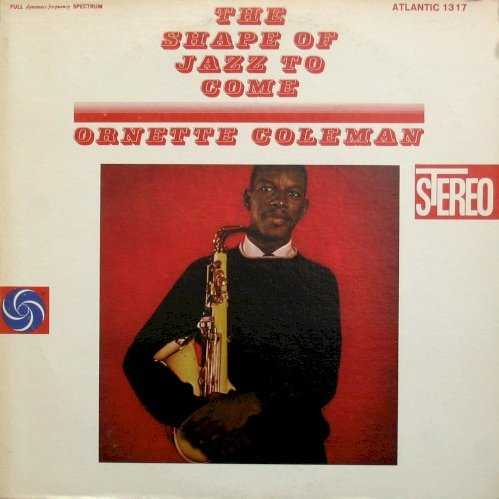 | Rank: 248 Album: 48 of 50 Artist: Ornette Coleman Title: The Shape of Jazz to Come Released: 1959-10 Tracks: 6 Duration: 38:13 Scroll: Up Down Top Bottom 25% 50% 75% Spotify TrackSamples Wikipedia Allmusic AlbumCover | 1 Lonely Woman (05:02) 2 Eventually (04:22) 3 Peace (09:04) 4 Focus on Sanity (06:52) 5 Congeniality (06:48) 6 Chronology (06:03) |
| The Shape of Jazz to Come : Allmusic album Review : Ornette Colemans Atlantic debut, The Shape of Jazz to Come, was a watershed event in the genesis of avant-garde jazz, profoundly steering its future course and throwing down a gauntlet that some still havent come to grips with. The record shattered traditional concepts of harmony in jazz, getting rid of not only the piano player but the whole idea of concretely outlined chord changes. The pieces here follow almost no predetermined harmonic structure, which allows Coleman and partner Don Cherry an unprecedented freedom to take the melodies of their solo lines wherever they felt like going in the moment, regardless of what the pieces tonal center had seemed to be. Plus, this was the first time Coleman recorded with a rhythm section -- bassist Charlie Haden and drummer Billy Higgins -- that was loose and open-eared enough to follow his already controversial conception. Colemans ideals of freedom in jazz made him a feared radical in some quarters; there was much carping about his music flying off in all directions, with little direct relation to the original theme statements. If only those critics could have known how far out things would get in just a few short years; in hindsight, its hard to see just what the fuss was about, since this is an accessible, frequently swinging record. Its true that Colemans piercing, wailing alto squeals and vocalized effects werent much beholden to conventional technique, and that his themes often followed unpredictable courses, and that the groups improvisations were very free-associative. But at this point, Colemans desire for freedom was directly related to his sense of melody -- which was free-flowing, yes, but still very melodic. Of the individual pieces, the haunting "Lonely Woman" is a stone-cold classic, and "Congeniality" and "Peace" arent far behind. Any understanding of jazzs avant-garde should begin here. | ||
 | Rank: 249 Album: 49 of 50 Artist: R.E.M. Title: Automatic for the People Released: 1992-10-06 Tracks: 12 Duration: 48:47 Scroll: Up Down Top Bottom 25% 50% 75% Spotify Allmusic AlbumCover | 1 Drive (04:30) 2 Try Not to Breathe (03:50) 3 The Sidewinder Sleeps Tonite (04:08) 4 Everybody Hurts (05:18) 5 New Orleans Instrumental No. 1 (02:15) 6 Sweetness Follows (04:21) 7 Monty Got a Raw Deal (03:17) 8 Ignoreland (04:27) 9 Star Me Kitten (03:16) 10 Man on the Moon (05:14) 11 Nightswimming (04:17) 12 Find the River (03:50) |
| Automatic for the People : Allmusic album Review : Turning away from the sweet pop of Out of Time, R.E.M. created a haunting, melancholy masterpiece with Automatic for the People. At its core, the album is a collection of folk songs about aging, death, and loss, but the music has a grand, epic sweep provided by layers of lush strings, interweaving acoustic instruments, and shimmering keyboards. Automatic for the People captures the group at a crossroads, as they moved from cult heroes to elder statesmen, and the album is a graceful transition into their new status. It is a reflective album, with frank discussions on mortality, but it is not a despairing record -- "Nightswimming," "Everybody Hurts," and "Sweetness Follows" have a comforting melancholy, while "Find the River" provides a positive sense of closure. R.E.M. have never been as emotionally direct as they are on Automatic for the People, nor have they ever created music quite as rich and timeless, and while the record is not an easy listen, it is the most rewarding record in their oeuvre. | ||
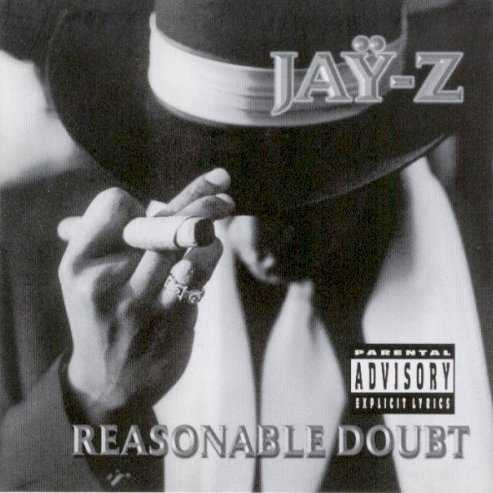 | Rank: 250 Album: 50 of 50 Artist: Jay‐Z Title: Reasonable Doubt Released: 1996-06-25 Tracks: 15 Duration: 59:18 Scroll: Up Down Top Bottom 25% 50% 75% Spotify Allmusic AlbumCover | 1 Cant Knock the Hustle (05:17) 2 Politics as Usual (03:41) 3 Brooklyns Finest (04:36) 4 Dead Presidents II (04:26) 5 Feelin It (03:47) 6 DEvils (03:32) 7 22 Twos (03:29) 8 Can I Live (04:10) 9 Aint No Nigga (04:02) 10 Friend or Foe (01:49) 11 Coming of Age (03:59) 12 Cashmere Thoughts (02:56) 13 Bring It On (05:01) 14 Regrets (04:32) 15 Can I Live II (03:57) |
| Reasonable Doubt : Allmusic album Review : Before Jay-Z fashioned himself into hip-hops most notorious capitalist, he was a street hustler from the projects who rapped about what he knew -- and was very, very good at it. Skeptics whove never cared for Jiggas crossover efforts should turn to his debut, Reasonable Doubt, as the deserving source of his legend. Reasonable Doubt is often compared to another New York landmark, Nas Illmatic: A hungry young MC with a substantial underground buzz drops an instant classic of a debut, detailing his experiences on the streets with disarming honesty, and writing some of the most acrobatic rhymes heard in quite some time. (Plus, neither artist has since approached the street cred of his debut, The Blueprint notwithstanding.) Parts of the persona that Jay-Z would ride to superstardom are already in place: Hes cocky bordering on arrogant, but playful and witty, and exudes an effortless, unaffected cool throughout. And even if hes rapping about rising to the top instead of being there, his material obsessions are already apparent. Jay-Z the hustler isnt too different from Jay-Z the rapper: Hustling is about living the high life and getting everything you can, not violence or tortured glamour or cheap thrills. In that sense, the albums defining cut might not be one of the better-known singles -- "Cant Knock the Hustle," "Dead Presidents II," "Feelin It," or the Foxy Brown duet, "Aint No Nigga." It just might be the brief "22 Twos," which not only demonstrates Jay-Zs extraordinary talent as a pure freestyle rapper, but also preaches a subtle message through its club hostess: Bad behavior gets in the way of making money. Perhaps thats why Jay-Z waxes reflective, not enthusiastic, about the darker side of the streets; songs like "DEvils" and "Regrets" are some of the most personal and philosophical hes ever recorded. Its that depth that helps Reasonable Doubt rank as one of the finest albums of New Yorks hip-hop renaissance of the 90s. | ||